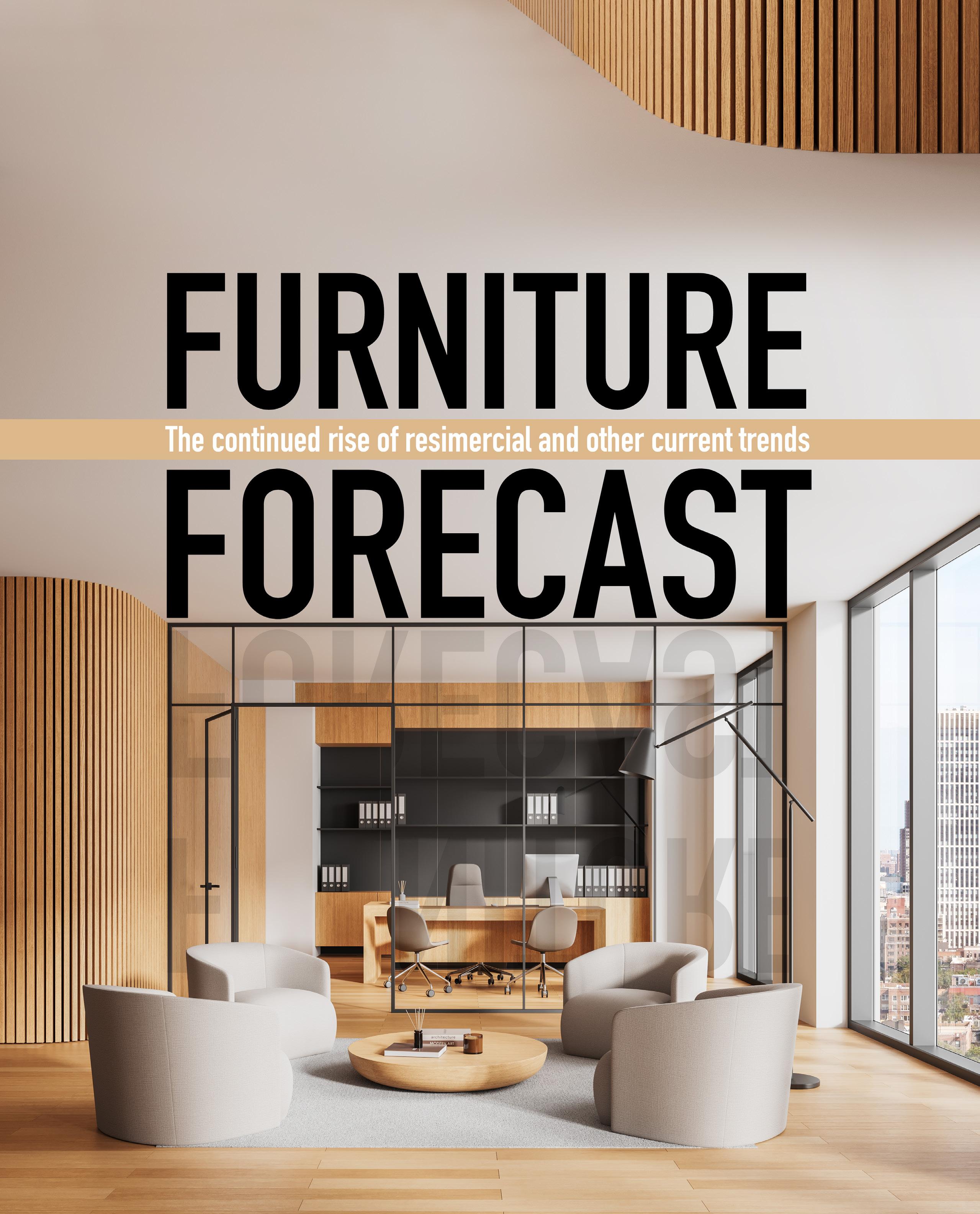

INDEPENDENT DEALER
Editorial & Contents
Give hope a helping hand
I’m writing this column just a few days after City of Hope’s fifth annual Day of Hope, a day of focused fundraising held each year on the first Tuesday of June to mark the beginning of National Cancer Survivors’ Month.
Cancer is something that affects all of us at some point. Those of us who have been lucky enough not to have been diagnosed with the disease will almost certainly have family members, friends or colleagues who have, and will know the impact it can have on people’s lives.
That is why the work done by City of Hope is so important. The advances that have been made and treatments developed at the charity’s facilities really are making a difference and helping to shift the prognosis for many patients in the right direction.
At the time of writing, this year’s Day of Hope has raised over $300,000, thanks in part to Domtar, which has agreed to triple match donations to $100,000—and the money is still coming in.

Rowan McIntyre, editor and publisher rowan@idealercentral.com
(There’s still time to donate at dayforhope.org.)
You can also help raise money in your dealerships with the Walk For Hope program. Later in the year, City of Hope will be hosting several walks throughout the country where it has locations, including Los Angeles; Orange County, California; Atlanta; Chicago; Phoenix and virtual options for those that don’t live near one of those sites.
I understand that a number of industry companies have already organized teams, including ISG, AOPD, S.P Richards and Essendant, so why not get your dealership involved too, and help bring hope to those who need it most.
For more information visit https://walk.cityofhope.org

26 USING DATA TO DEFEND YOUR BUSINESS OP Software’s Rick Marlette on pricing strategy
30 COVER STORY Furniture forecast: Lisa Veeck documents the continued rise of resimercial office design and other current trends.
36 COLUMNS
36 West McDonald: On ChatGTP’s new features
40 Jennifer Vitanzo: Build an audience with authority
44 Tom Buxton: On the return of an old scam
46 Troy Harrison: On selling to younger buyers
48 Marisa Pensa: On winning back lost customers
INDEPENDENT
Editor and publisher
Rowan McIntyre
Finance and operations

Bright ideas. Real results.
Bright ideas. Real results.
Bright ideas. Real results.

Give your customers something fresh.
Give your customers something fresh.
Give your customers something fresh.
Stay ahead of customer needs with printable labels and marketing materials that elevate packaging and adapt to every idea, season, or shelf. Deliver quality labels, cards, tags, and more—backed by Avery innovation, consistency, and trusted performance.
Stay ahead of customer needs with printable labels and marketing materials that elevate packaging and adapt to every idea, season, or shelf. Deliver quality labels, cards, tags, and more—backed by Avery innovation, consistency, and trusted performance.
Stay ahead of customer needs with printable labels and marketing materials that elevate packaging and adapt to every idea, season, or shelf. Deliver quality labels, cards, tags, and more—backed by Avery innovation, consistency, and trusted performance.
• Offer high-impact packaging with label shapes that add shelf appeal
• Offer high-impact packaging with label shapes that add shelf appeal
• Offer high-impact packaging with label shapes that add shelf appeal
• Cut down on misalignments and disruptions with Sure Feed® technology
• Cut down on misalignments and disruptions with Sure Feed® technology
• Cut down on misalignments and disruptions with Sure Feed® technology
• Add branded touches with printable tags and cards made to impress
• Add branded touches with printable tags and cards made to impress
• Add branded touches with printable tags and cards made to impress
• Provide flexibility with repositionable stickers designed to adapt as needed
• Provide flexibility with repositionable stickers designed to adapt as needed
• Provide flexibility with repositionable stickers designed to adapt as needed



Winner’s Circle
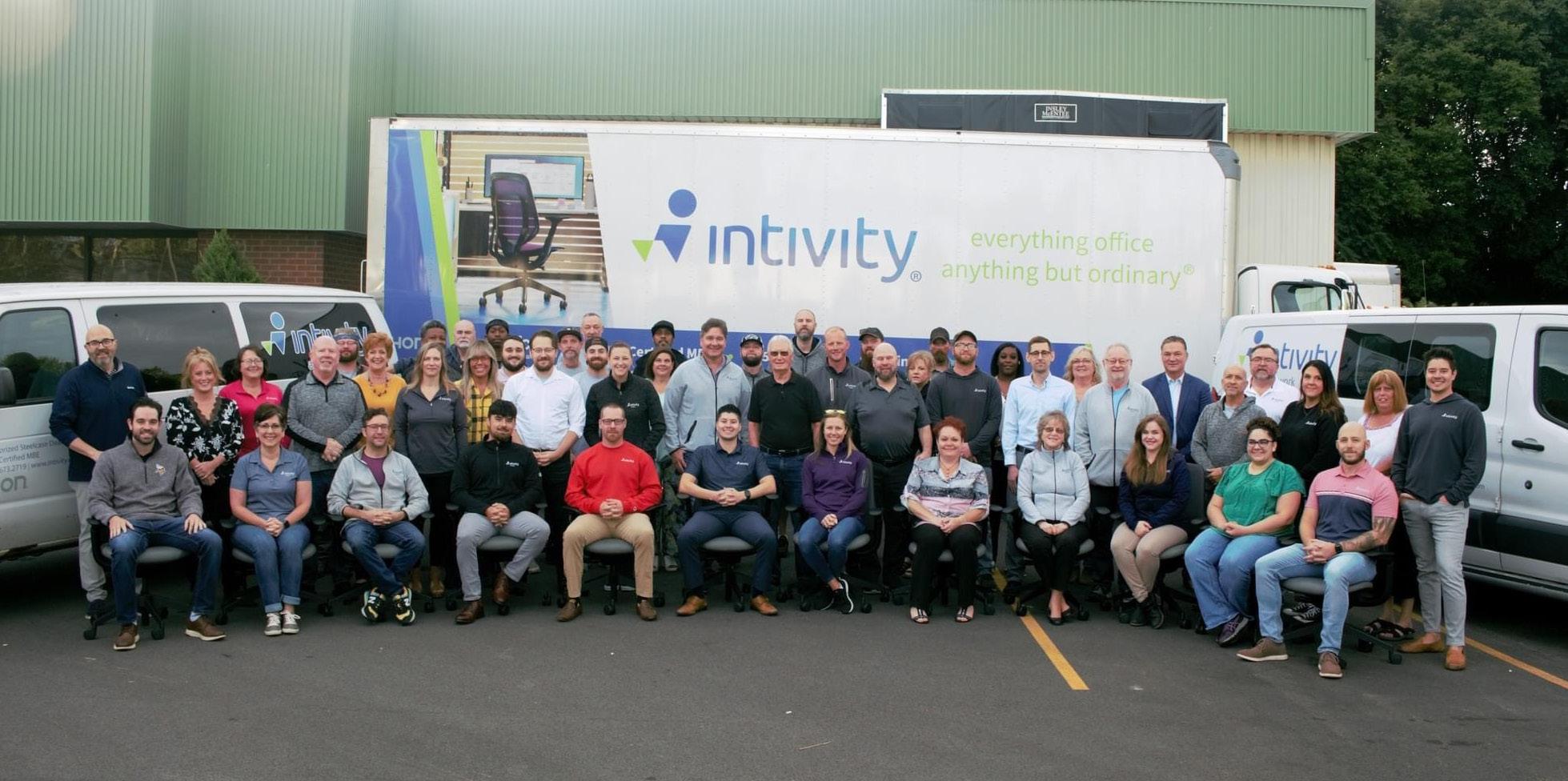
Intivity turns 30
In 1995, Fabricio Morales and his partners opened Intivity in Rochester, New York. The company’s sole product offering was day timers manufactured by Eastman Kodak Co. Pleased with Intivity’s service and drive, Kodak mentored the new independent dealer, encouraging it to expand into other office products and take on new customers. As a result, Intivity grew from $200,000 to $5 million in annual sales. “Kodak took us under its wing as a minority supplier and helped us diversify and grow,” explains Fabricio’s son Nate Morales, vice president of Intivity’s strategic sourcing division. And grow the company did.
Intivity acquired a furniture company in Rochester in 2004 and a second one in Albany, New York, in 2007. Both companies were Steelcase dealers, which made Intivity a designated Steelcase dealer. Then, in 2010, it partnered with W.W. Grainger, joining the industrial supply giant’s Dealer Alliance program. The move allowed Intivity to resell all Grainger products, opening the door to state government contracts.
Today, Intivity boasts 68 employees and enjoys annual sales of $60 million.
Nate highlights several reasons why a company that started out selling day timers is still going strong three decades later: “We continuously invest in our people and hire the right people, who are aligned with our vision of where we want the company to go. We also listen to our customers. The roots of Kodak’s mentorship advised us to keep our ears to the ground, which is what we do. We keep close to our customers and listen to their needs.”
Nate suggests these relationships are essential to the company’s continued ability to fend off the Amazons of this world. “If you say Amazon hasn’t been a factor in your business, I believe that is untrue,” he says. “However, Amazon is set up as a self-serve model and we are not. Our people are always involved. We serve customers who don’t have the time or resources to be experts in our fields, whether office products, furniture or industrial supplies. We fill the gap, making ourselves part of their business. We make sure we provide value-added service.”
According to Nate, reinvesting in the business has also been vital to Intivity’s longevity: “We continue to invest in the business. We look for new technologies to help automate our business. We are about to launch a whole new website and ERP system.”
For other dealers keen to thrive into the future, Nate offers this advice: “Don’t be afraid to take risks because there can be a reward for every risk. If we hadn’t been willing to take a risk, we would not be where we are today. And listen to the customers, then be sure you have the right people and products to meet their needs.”
Nate has a clear vision of the next five to 10 years for the company: “We will continue to invest in our people to help us become more consultative than product focused. We will transition the company from my dad to me in the next five years. Right now, a lot is happening in the world. It’s an environment of turmoil; but once it all shakes out, we are setting ourselves up for future growth. Intivity will continue as a family business and when it comes to the future, we have high hopes.”

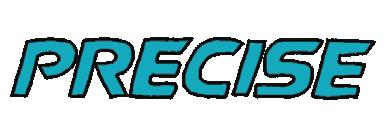


Friends Office employee named Outstanding Volunteer of the Year
Linda Groover Osterfeld, an employee of Friend’s Office in Findlay, Ohio, has been named Outstanding Volunteer of the Year by the Rotary Club of Dayton, Ohio. The award was presented last month at the President’s Club of Dayton Awards Ceremony.
The vote, made by the Rotary Club of Dayton board of directors, was unanimous.
Osterfeld is also the incoming president-elect of the club and will start her term as president on July 1, 2025. She has served on the board for four years, including as secretary, vice president and president-elect. She has volunteered for a long list of club and district service projects, including Rebuilding Together, Dayton’s community service day; painting, upkeep and weeding at a community garden in an underserved area; building
beds for Sleep in Heavenly Peace, an organization that provides bed frames, bedding and mattresses for youth in the community; Miami Valley Meals, which provides chef-inspired quality food for underserved families and individuals; serving meals at St. Vincent DePaul shelter to guests living in temporary conditions; and participating in a river-way cleanup with Five Rivers Metro Parks in preparation for the NATO conference hosted in Dayton this past May. On an international level, she has contributed to Polio Plus, an initiative aimed at eradicating polio worldwide, and serves as the Rotary Club of Dayton’s youth exchange officer.
“Gratitude is a choice and love needs action,” said Osterfeld, explaining her commitment to volunteering. “I have been given so much in this life; I am grateful for the blessings and the challenges. Being
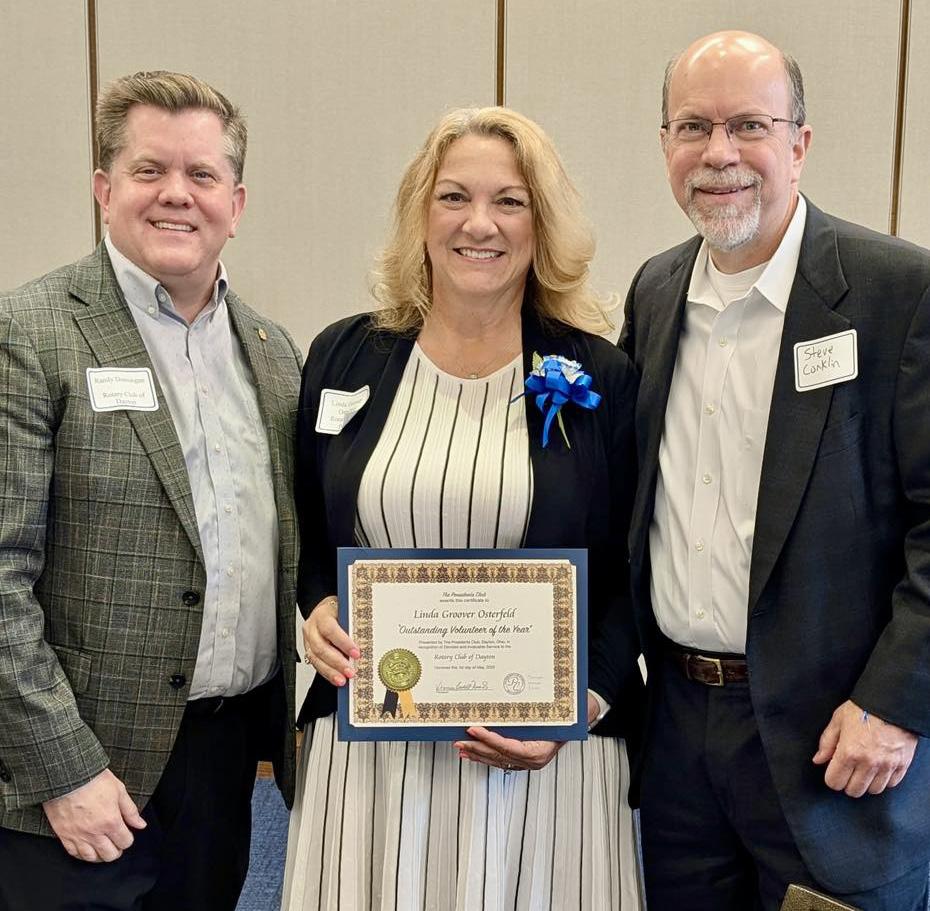
able to give of myself and lead by example is my way of showing gratitude and sharing love. The rotary four-way test is a great benchmark for feeling secure in the action I take: (1) Is it the truth? (2) Is it fair to all concerned? (3) Will it build goodwill and better friendships? And (4) will it be beneficial to all concerned?”

Linda Groover Osterfeld, with Rotary Club President Randy Domigan (l) and Club Treasurer Steve Conklin
FSIoffice names Teacher All-Star of the Year
FSIoffice of Charlotte, North Carolina, has named Rick Dial of Patterson Elementary in Red Springs, North Carolina, its 2024–25 Teacher All-Star of the Year.
The FSIoffice Teacher All-Star program invites community nominations to spotlight outstanding K-12 educators monthly from April through September.
Seven monthly winners, as voted for by the public, along with three “wildcard” runners-up, compete for the annual title. The All-Star Teacher of the Year is then selected by an internal committee whose members rotate annually. All nominees receive varied amounts of office supplies. The All-Star Teacher of the Year is presented with $5,000 in office supplies and a schoolroom makeover—paid for by HON—that ranges from $30,000 to $50,000, depending on the classroom’s needs.
Dial, a dedicated music educator, was recognized for his innovative Sheetrock Drummers program, which fosters student creativity, music literacy and performance skills through personalized, hands-on instruction. His work exemplifies the critical role teachers play in shaping young minds and strengthening communities.








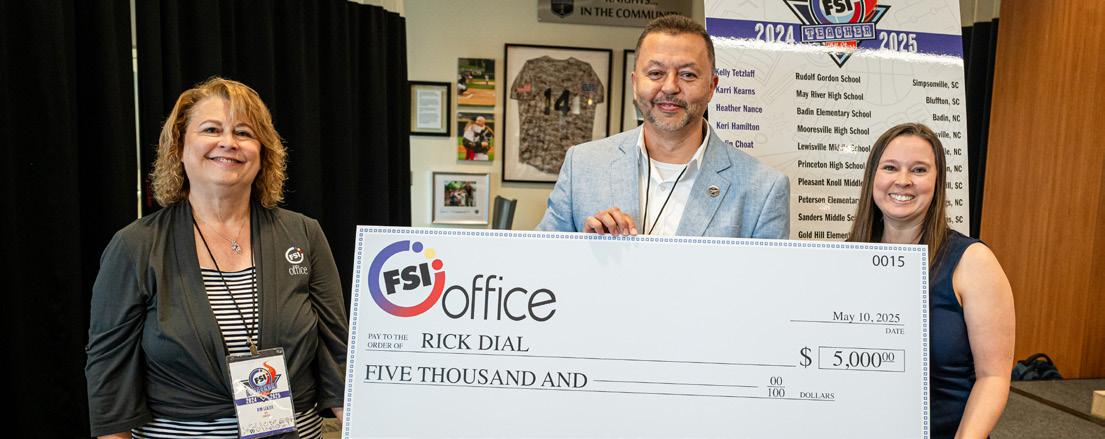
“The educators we honor with this program are true servant leaders,” says Kim Leazer, CEO of FSIoffice. “By celebrating their commitment with classroom resources and public recognition, we hope to elevate the essential work they do every day.”
FSIoffice’s support for educators reflects its broader mission to invest in the future of education. “The average teacher here spends between $750 and $1,000 of their own money on supplies; 30 percent spend more than $1,000,” explains digital marketing manager Larry Jones. “Part of the reason Kim started this program 15 years ago is to shine a light on the unbelievably valuable work teachers do and to draw attention to how much most teachers are underfunded.”
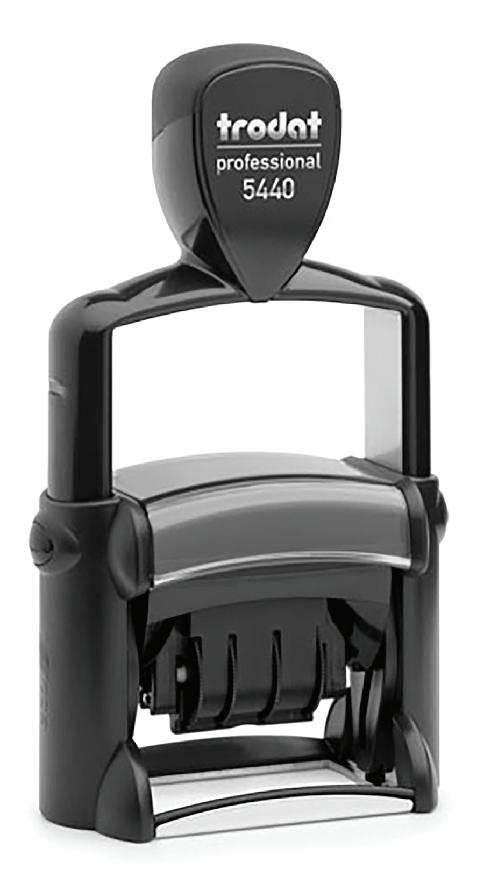
Eakes names winner of 2025 scholarship
Eakes Office Solutions, Grand Island, Nebraska, has awarded Lauren Pohlenz the Howard and Gladys Eakes Memorial Scholarship for 2025. Pohlenz is a graduate of Doniphan Trumbull High School in Doniphan, Nebraska. She is studying for a career in the culinary arts.
Eakes Office Solutions started offering the scholarship in 2001. Eight of its employee-owners at the time contributed seed money to start the scholarship in honor of company founder Howard Eakes and his wife, Gladys. Dan and Ron Eakes, Howard’s two sons, were among the founding contributors to the scholarship.
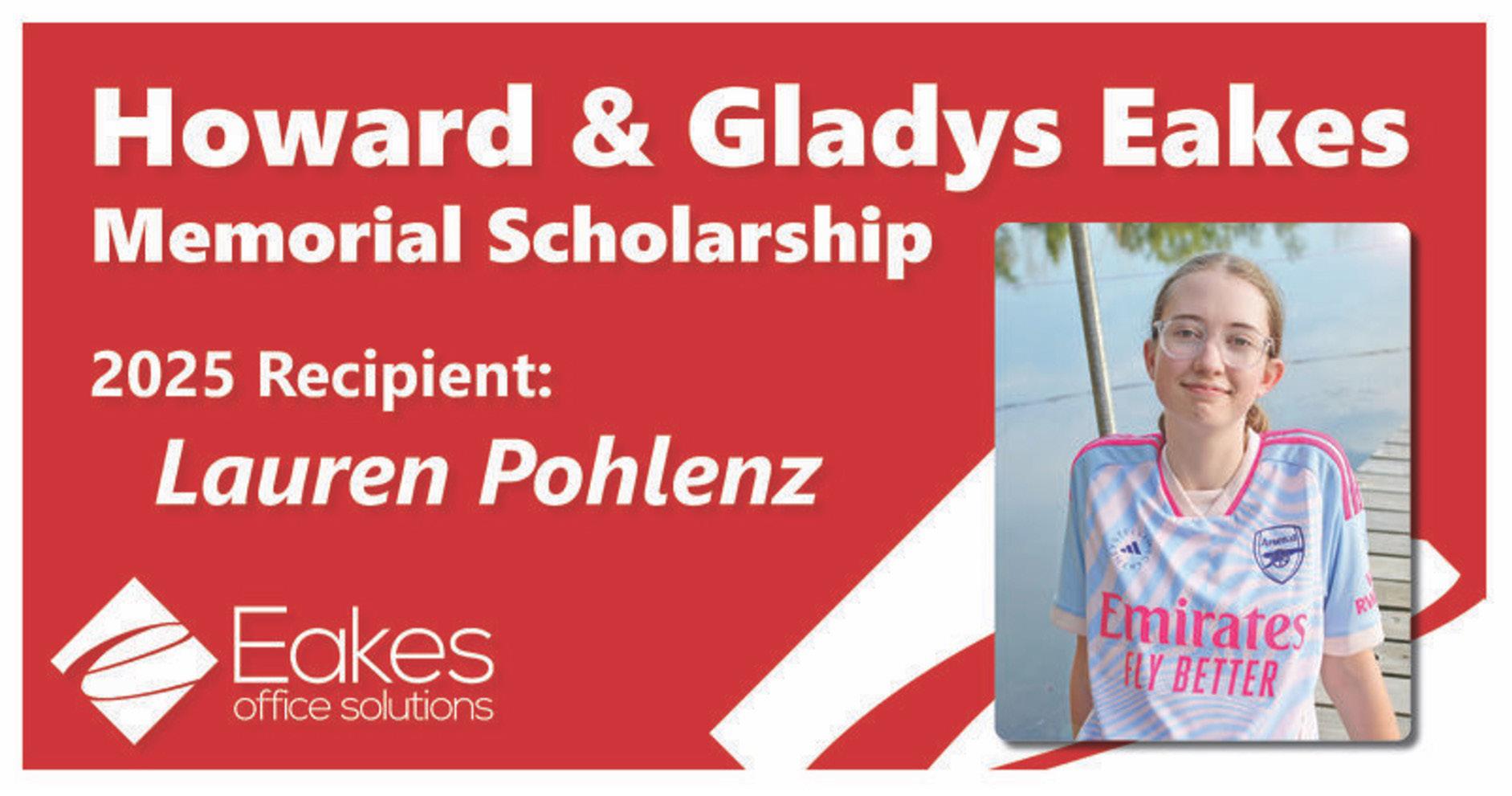
The purpose of the scholarship is to reward student children of employees for excellence at school. The award is $1,000 unless there are five or more applicants, in which case two $500 scholarships are awarded.
“We are proud to have started the Howard and Gladys
Eakes Memorial Scholarship 24 years ago,” says CEO Mark Miller, another founding contributor to the scholarship. “It is refreshing to know that every year, someone in the Eakes employee family will get a little help from the company to help further their education. Lauren is the daughter of Christian and Pam Pohlenz. Christian is one of our technology solution sales specialists. He has been at the cutting edge of virtually every new technology product Eakes has offered since he started 26 years ago.”














Find Zen In Your Pen
From the Makers of the #1 STEEL Brand comes Zebra’s Pearl White G-750 under its new Signature Series!

This rapid dry ink gel pen features a durable brass design and metal clip with black and blue ink to complement any endeavor whether work, school, personal or creative.
The Pearl White G-750 includes interchangeable color bands, allowing you to distinguish between ink colors. With its Pearl White finish, this pen combines timeless elegance and sturdiness that is sure to impress.







Ink Colors Available Barrel Colors Available
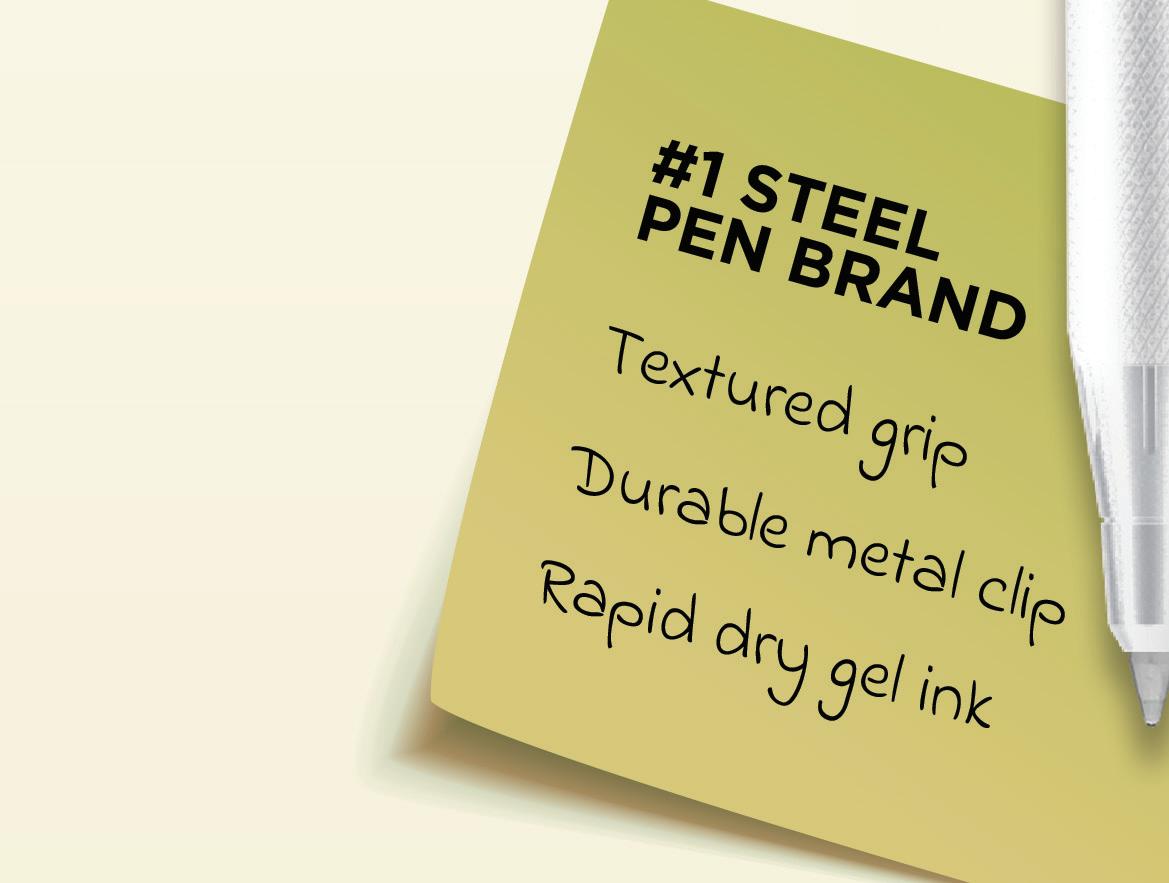



Scan to learn more about


STEEL G-750.
Winner’s Circle
Family member returns to Guernsey
Savannah Guernsey, daughter of industry legend Dave Guernsey, has rejoined the eponymous family-owned dealership in Dulles, Virginia.
After spending six years at the company as marketing director, Savannah left in 2019 to join EY-Parthenon. As a director at the consulting giant, she worked on a number of complex large-scale projects and specialized in M&A.
Now she has returned to the family business as chief revenue officer. She succeeds company veteran Gordon Thrall, who will retire at the end of June. The two are working together until then to
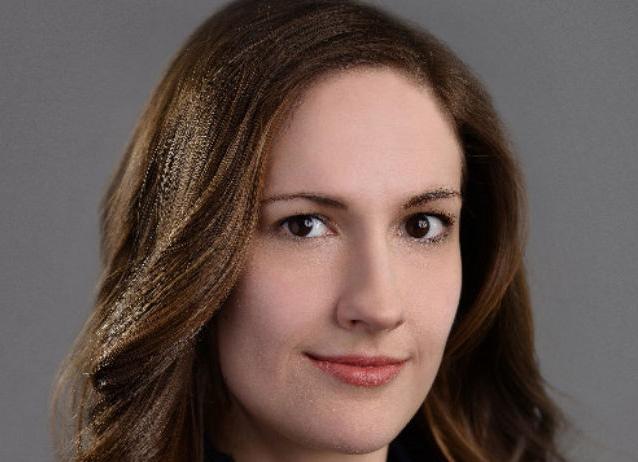
ensure a smooth transition.
“Her energy, fresh ideas and insights—particularly those from outside of our industry—will be invaluable as Doug [Guernsey, CEO] and the company’s leadership chart the course for the next decade,” Thrall wrote in a letter to staff.
Walker’s Office Supplies sponsors Fore the Kids Golf Tournament
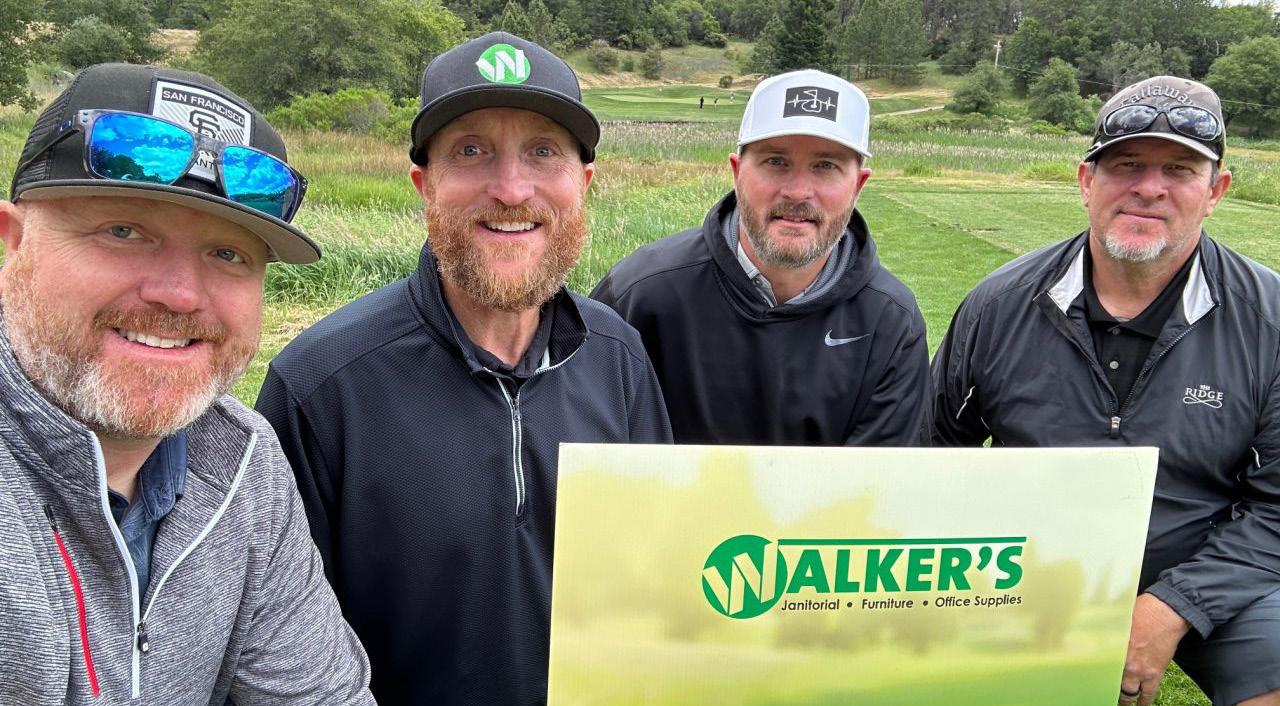
For the 13th year, Walker’s Office Supply, Rocklin, California, has supported the Fore the Kids Golf Tournament, arranged by the Boys & Girls Club of Placer County. The event was held on May 13, 2025 at the Winchester Country Club in Meadow Vista, California, attracting approximately 120 golfers and around 200 spectators.
Walker’s sponsored a hole at the
tournament and provided some giveaway items, and a Walker’s team participated in the event.
“Walker’s is proud to support the Boys & Girls Club because they provide invaluable resources and opportunities for young people in our community,” says president and co-owner Jarrod Anderson.
“It’s an investment in the future and we’re honored to be a part of it.”
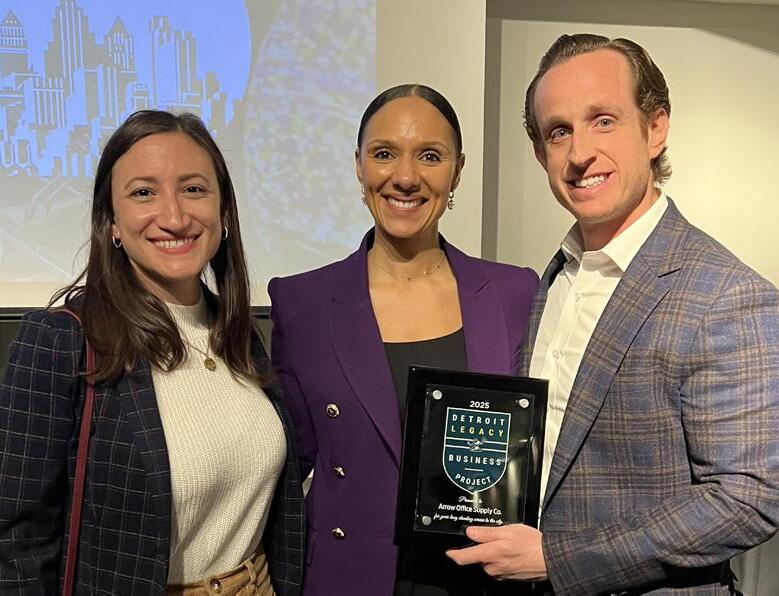
Arrow Office Supply earns $5,000 grant for longevity
Arrow Office Supply (AOS), Detroit, Michigan, has been awarded a $15,000 grant from the City of Detroit’s Legacy Business Project.
The award is presented to businesses that have been in operation for at least 30 years and have helped to shape the cultural identity and collective character of Detroit. Arrow was one of 14 winners—two from each of Detroit’s seven districts. Two city-wide awards of $50,000 each were also awarded.
“Detroit has been growing in the last 10 to 20 years and it is wonderful to see so many new businesses opening here,” says Ilene Crane, one of the partner-owners at Arrow alongside her cousin Marc.
“But it’s great recognizing companies like Arrow that have been here almost 80 years. It’s heartwarming and an honor to be recognized with so many other great companies that have been here so many years.”
The grants were presented during an evening reception held at Detroit’s historical museum.
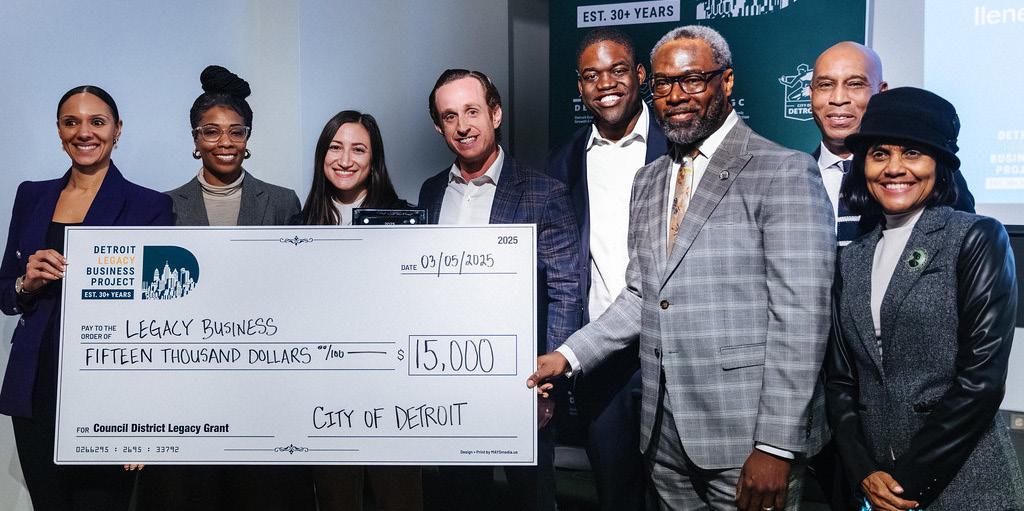

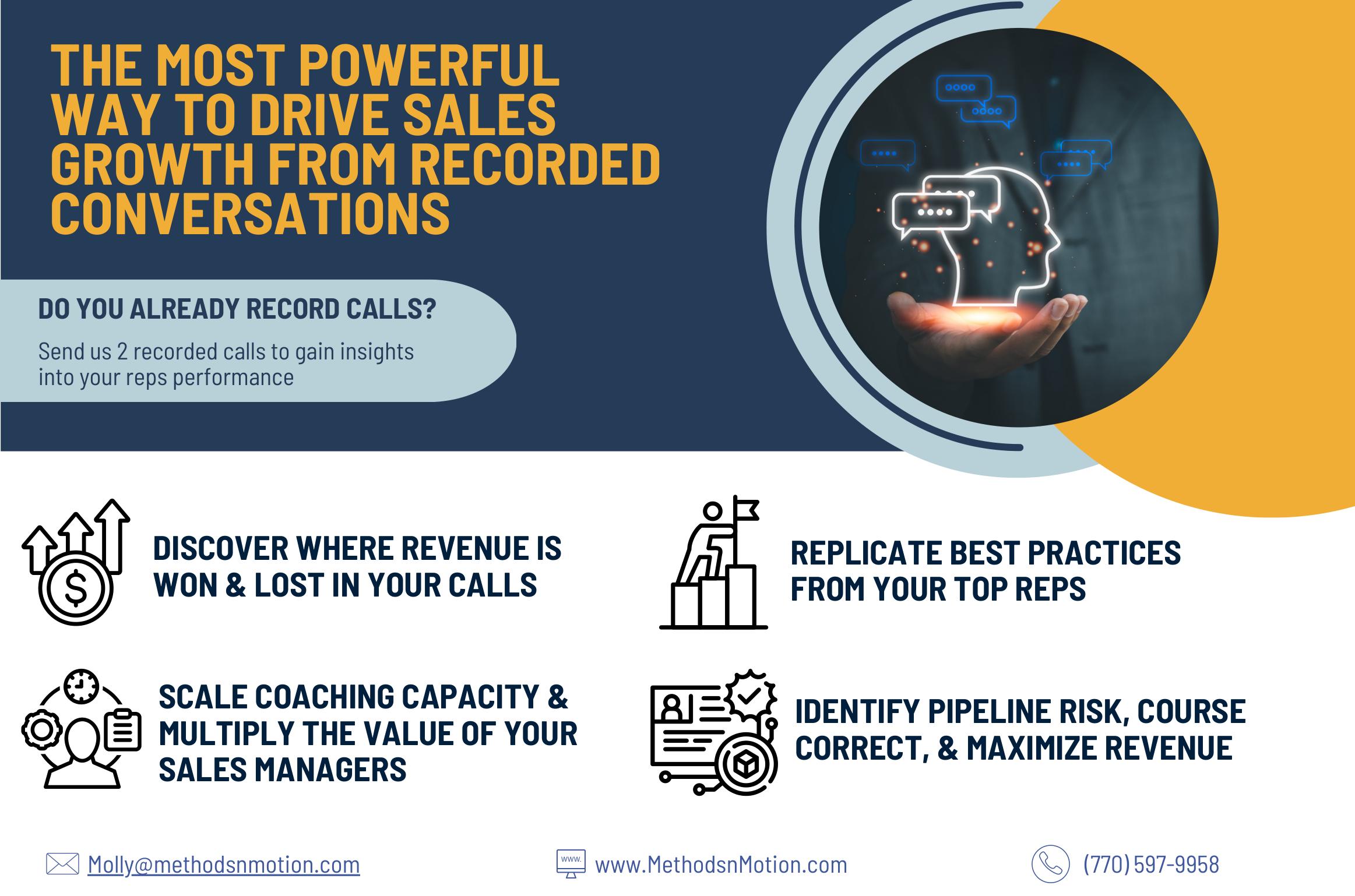
Secrets of Success
Eakes Office Solutions
When you have been an independent dealer for 80 years— growing from one to 14 locations, employing 300 people and enjoying annual sales of $90 million—you will know a thing or two about what’s been driving that success.
Based in Grand Island, Nebraska, Eakes Office Solutions was founded eight decades ago by Howard Eakes, who had learned how to repair typewriters during the Second World War. He expanded from his kitchen table to a storefront in Grand Island, swiftly growing the company to become the fourth-largest office products supplier in the town of 50,000. In a short space of time, it had become the largest. After 25 years, his sons Ron and Dan took over and the business bloomed under their leadership for the next quarter of a century. Today, Ron is retired and Dan semi-retired. The company is owned by 36 key employees (seven with voting stock); and while Eakes is primarily Midwest-focused, it sells to customers in 27 states.
Success factors
“Our attention to employees is the first and foremost reason for Eakes’ success,” says president and CEO Mark Miller. “We ensure our employee experience is the best it can be. We promote good communication and provide education. We offer an extensive leadership program for individuals seeking to develop their leadership skills. Some companies focus on the customer, but our primary focus is on our employees because we know they, in turn, will take care of our customers. This is central to our success.
“Howard started Eakes based on three core values: work hard; be involved in the community; take care of customers,” he continues. “We’ve added some additional values, but these three we carry on even today. It’s who we are.
“An equally important reason for our success is that we are present. Anyone can sell our products; the major differentiator
Company info
Headquarters: Grand Island, Nebraska
Top management: Mark Miller, president and co-CEO; Paul McKinney, CFO and co-CEO; Cameron Piester, sales director; Vicki Tautenhan, sales strategy director; Kevin Fries, HR director; Nate Schaf, marketing director
Annual sales: $90 million
Number of employees: 300
Main wholesaler: S.P. Richards
Sector breakdown: Managed IT 5% (new business); equal remaining percentages between office products, contract furniture, copiers and janitorial supplies and equipment
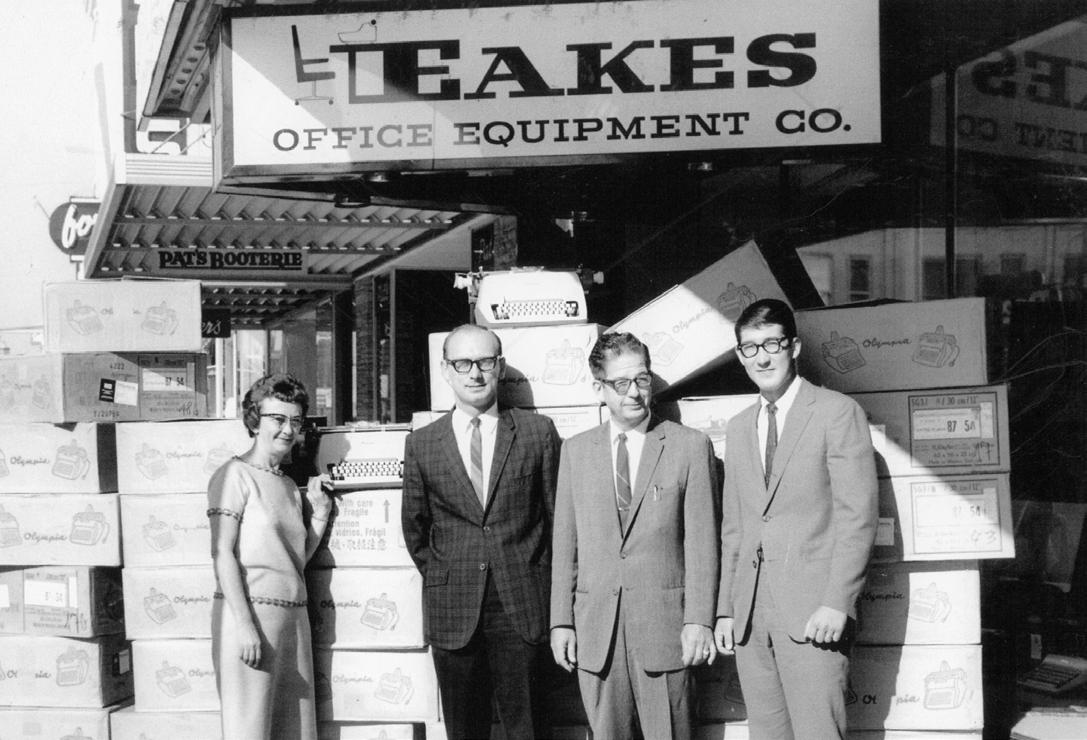
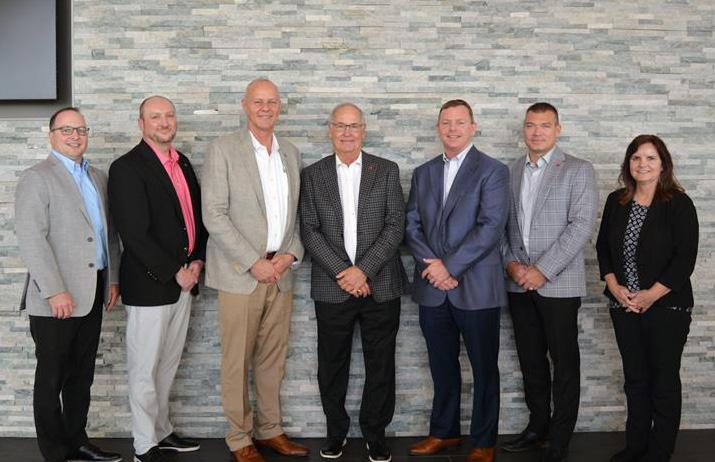
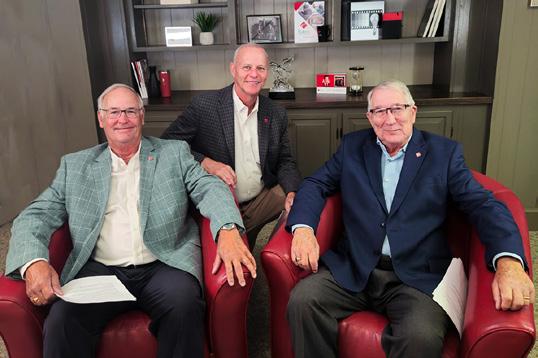
for us is we are there for our customers. We are not fully online only. There are a lot of customers who want to buy online, but a big part of the world still wants to buy from people. Be present. It’s our mantra—and not just for sales reps.”
Staying ahead of the curve
However, this commitment to presence doesn’t mean Eakes has ignored technology—far from it. The company recently established an IT management division that provides security and network administration, cloud storage and all things computer related. The new offering reflects Eakes’ belief that independent dealers must continuously adapt to stay competitive.
“When Staples, Office Depot and other big box stores started opening stores in our industry, we had to get better at retail,” explains Miller. “Today, Amazon is our single-biggest competitor, so we have to tweak our model. IT is our new macro business. We are doubling down on it because we see this as a growing and profitable market for us.”
Tips for the future
Miller offers this advice for other independent dealers keen to achieve the same longevity as Eakes: “Stick to the core principles that work for you, but at the same time adapt to important trends as time goes on.”
On the future of Eakes, Miller muses: “As rapidly as things are changing, it’s hard to make guesses even about the next five to 10 years. But we will take the appropriate steps to maintain our standing as a strong independent dealer and have every intention of being the dominant office solutions provider in our market.”
SERVING UP YOUR HOSPITALITY SIGN AND MENU NEEDS

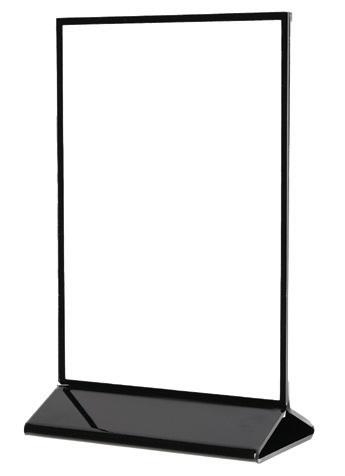



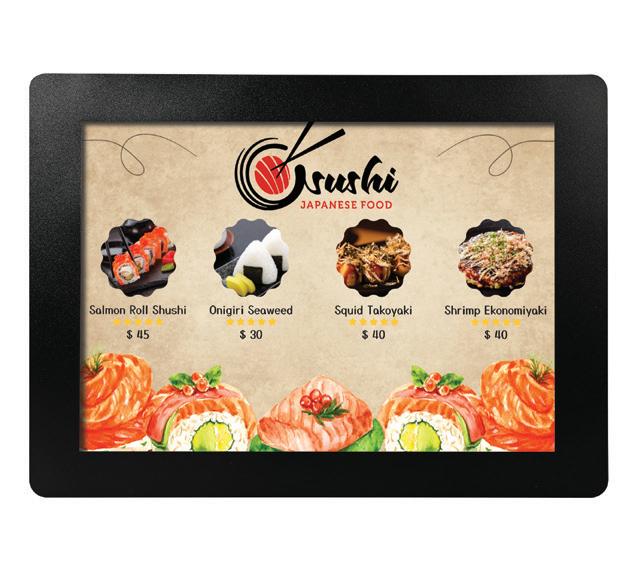
SIGN & MENU HOLDERS
Designed speci cally for the demands of the restaurant, food service, and hospitality industries, our free-standing sign and menu holders, menu covers, table tents, and counter mats are engineered to last. Their clear viewing panels ensure full visibility, allowing establishments to e ortlessly showcase daily specials or convey other essential messages. Experience the convenience and professional presentation our sign and menu holders provide. Available in a variety of di erent sizes and styles.
Industry News
TOPS acquires Smead
Leading US office products vendor TOPS has announced the acquisition of well-known manufacturer Smead in a deal that includes Smead’s full product portfolio.
Smead was founded by salesman Charles Smead in 1906, but was acquired by PA Hoffman—one of its original employees—in 1916. Since then, it has remained in the hands of the Hoffman/Avent family, run by iconic leaders such as Ebba Hoffman, Sharon Hoffman Avent and, more recently, Casey Avent.
Now, the business has been purchased by another force in the US stationery and office products sector, TOPS, which can trace its roots back to 1870. Today, the company is owned by private equity firm Atlas Holdings and operates a manufacturing and distribution platform which includes facilities in the US, Canada and Mexico.
The deal with Smead follows TOPS’ acquisition of Redi-Tag in May 2023. By joining TOPS’ portfolio, the Smead, U Brands and Smead Custom brands may benefit from an expanded platform for long-term, sustainable growth and customers of both businesses will have access to the full breadth of their product portfolios.
“Smead fits perfectly into the TOPS family of brands,” said Matt Roberts, CEO of TOPS. “Smead makes great products and has for over a century, and its industry expertise, coupled with an unwavering commitment to employees and customers, mirrors what we believe we’ve built here at TOPS. We’re honored to be entrusted to carry on the Smead legacy of quality and innovation that has defined the brand for over a century.”
“After nearly 120 years as a family-owned business,
President change at SPR
There has been a senior leadership development at US wholesaler S.P. Richards (SPR).
Andrew Wallach, CEO of SPR’s owner Central National Gottesman (CNG), took on the role of president at the wholesaler in early 2024. At the same time, he appointed Jason Horst—a veteran of the North American paper industry and with CNG since 2014—as SPR’s chief commercial officer.
Now, Horst has been promoted to president, with Wallach returning to focus on his group CEO duties. Senior SPR execs, including Jack Reagan and Nick Lomax, therefore now report directly to Horst.
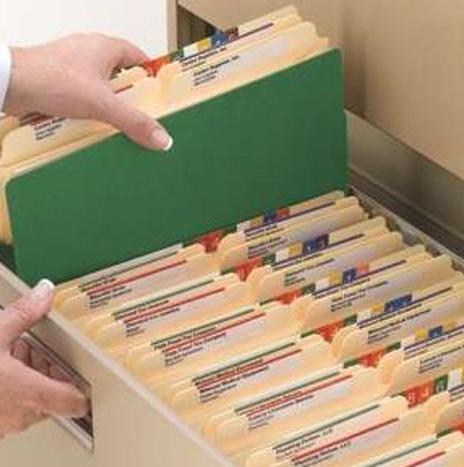
I’m proud to usher in this new chapter for Smead with the right home to build upon what we’ve created,” said Casey Avent, CEO of Smead. “Joining TOPS is the next step in a line of strategic decisions we’ve made to do what’s best for the Smead business and our exceptional team. I am confident this decision will preserve Smead’s unwavering tradition of quality and innovation while enhancing its leadership position in the market. With TOPS’ backing, customers will continue to enjoy the same top-tier products and services they’ve come to expect from Smead for the next 100 years.”
Terms of the transaction were not disclosed.
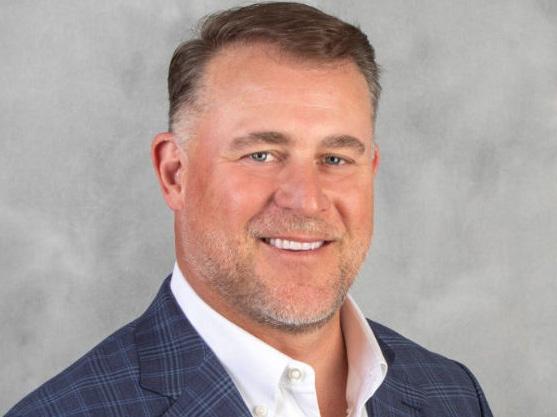
Jason Horst
Highlands announces promotions
Sales and marketing agency Highlands has promoted a number of its team members to new roles.
On the sales side, Peter Telegadis has been made field sales manager for the national team, while Emma Valenti is now the firm’s business development representative, wholesale for Southeastern territories.
In his new role, Telegadis will focus on driving growth and identifying new business opportunities through strategic, value-based conversations with customers and partners.
He has been with Highlands for over three and a half years and has played an integral role in the success of the wholesale team, where his leadership, relationship-building skills, and results-driven mindset have contributed to significant sales growth.
In her new role, Valenti will focus on selling through distribution by supporting Highlands’ clients and collaborating with wholesale and distributor sales teams to identify opportunities and drive growth across


the Southeastern market. She transitions into this position following over two and a half years of success on the client services team, where she has played a key role in supporting strategic accounts and building strong client relationships.
Meanwhile, Maggie Burghardt has been appointed design director, having previously served as art director and senior designer since joining the company in 2018. In her new role, she will lead creative direction and


execution across digital and print platforms, ensuring brand consistency and compelling storytelling through visual design.
In addition, Meghan O’Gara has been named senior marketing director. With the business for the past five years, she is charged with guiding strategic marketing initiatives across content, campaigns and communications.
Both Burghardt and O’Gara will report directly to Seth Raley, partner and president at Highlands.
US federal government overhauling purchasing regulations
Key stakeholders in federal procurement have launched what is described as a “historic move to rein in government inefficiency and protect taxpayer dollars.”
The Revolutionary FAR Overhaul (RFO) aims to modernize the Federal Acquisition Regulation (FAR), the rulebook agencies follow when buying everything from software to military equipment.
The initiative comes after President Trump’s Executive Order of April 15, titled “Restoring Common Sense to Federal Procurement.” The RFO is being led by the Office of Federal Procurement Policy in partnership with the Department of Defense (DoD), General Services Administration (GSA) and National Aeronautics and Space Administration as members of the FAR Council.
A GSA press release claimed RFO reflected a “smart
approach to government by eliminating unnecessary regulations, speeding up procurement, and enabling agencies to deliver better results with fewer resources.” It promised to eliminate non-statutory and duplicative regulations; remove DEI and wokeness; remove burdensome requirements and adopt straightforward buyer guides.
DoD principal director John Tengalia called RFO a “once-in-a-generation opportunity to meaningfully revamp the FAR.”
It appears unlikely business products suppliers will be seriously impacted, in the near term at least. RFO will initially focus on areas such as technology, infrastructure and national defense. The first buyer guide will involve software-as-a-service.
(l-r) Emma Valenti, Peter Telegadis, Maggie Burghardt and Meghan O’Gara
Newell makes senior exec announcements
Newell Brands has announced several senior leadership changes as part of what it says is an “ongoing commitment to strengthening organizational capabilities and advancing our culture of innovation.”
Michael McDermott has assumed leadership of the vendor’s enterprise-wide B2B operations. His goal will be to drive expansion into key sectors such as healthcare, hospitality and government. At the same time, he will continue to lead the Commercial and Home Fragrance units as co-CEO of the Home & Commercial segment.
The other co-CEO of Home & Commercial is Melanie Huet. She was most recently Newell’s chief marketing officer (CMO). In her new role, her focus will be on
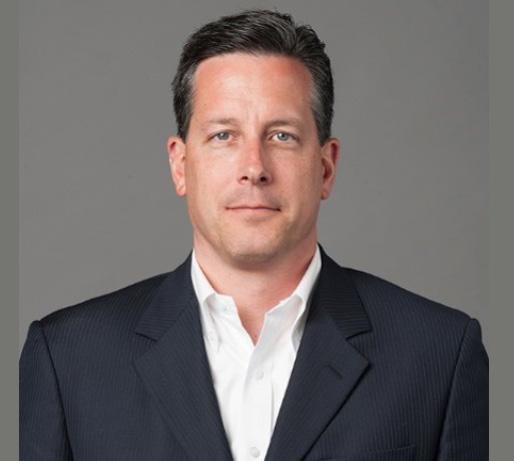



ESG hires CCO
Consulting firm Execution Specialists Group (ESG) has expanded its team with the appointment of Ed Carr as chief commercial officer (CCO).
Carr has more than 30 years of experience in B2B distribution and sales. He has held senior roles at companies such as Corporate Express, School Specialty, Reinhart Foodservice, Nicholas and Company and Packsize.
As ESG’s CCO, Carr will lead the firm’s commercial strategy, oversee the sales, marketing and market research teams, spearhead business development initiatives and continue to cultivate strong client relationships.
“Ed’s extensive experience, strategic vision and proven ability to execute at scale will be invaluable as we further amplify our clients’ AI-centered strategic initiatives,” said ESG founder Mark Newhall.
He added: “His decisive, adaptive leadership will be pivotal in further shaping our commercial strategy, expanding our market presence and strengthening our deep relationships between cutting-edge AI technology leaders and the enterprise B2B sector.”

Emerald relocates production to the US, increases composting capability
Sustainable foodservice products supplier Emerald Ecovations has moved production of its product line to the US.
The company believes the onshoring of manufacturing to the US will support American farmers, streamline the company’s supply chain and help its distribution partners control costs in the face of rising overseas tariffs.
Emerald’s recently acquired facility in Arkansas will serve as a hub for transforming renewable plant fibers into compostable and biodegradable alternatives to conventional paper and plastic products. This initiative, it notes, represents “a long-term commitment to sustainability, transparency and economic growth—delivering impact not only for the planet, but also for local communities and the broader US economy.”
“We started taking action three years ago to fortify ourselves against supply chain uncertainty and price
fluctuations,” said CEO Ralph Bianculli.
“We are able to work directly with American farmers to source renewable fibers for over 300 products while reducing emissions from overseas shipping and providing our partners with greater inventory reliability and cost stability. Our clients across the US will now be part of the most impactful carbon-reduction platform in the disposable space.”
Meanwhile, the company has expanded its composting capabilities and become the authorized US dealer for Octoen’s advanced composting systems. The technology helps businesses turn food waste and compostable disposables into fertilizer within 12-24 hours, addressing landfill challenges. Beginning in June 2025, businesses can integrate these systems into their operations.
“This platform now offers our clients, their waste management partners and their sustainability professionals the
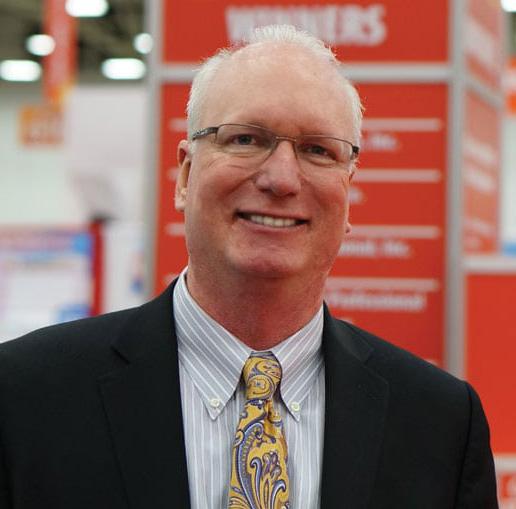
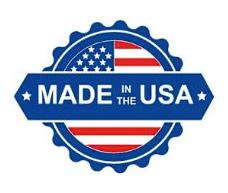
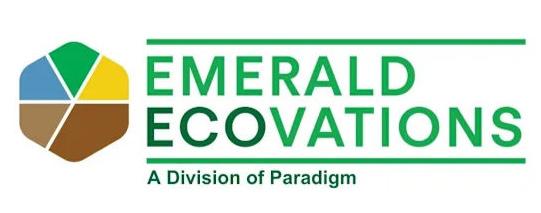
most advanced solution to closing the loop and advancing their ESG Scope 3 goals,” said Bianculli.
Separately, New York Racing Association has named Emerald as its preferred sustainable products provider in a new multiyear agreement. The company will supply plant-based, tree-free foodservice and facility products at Saratoga Race Course, with branding across the property during events including the Belmont Stakes Racing Festival and the Saratoga summer meet.
EDmarket CEO to retire
Jim McGarry, president and CEO of education industry trade association EDmarket, will retire from the organization in November. McGarry has led EDmarket for the past 14 years, with the association stating: “Jim has been the driving force behind EDmarket’s growth, innovation and commitment to learning environments that shape future generations. His leadership has left a lasting imprint on our members, partners and the entire education market.”
Prior to joining EDmarket, McGarry worked as an executive recruiter at the McCormick Group and before that he served as president and COO of the Independent Office Products and Furniture Dealers Association, when it was the parent organization for NOPA and OFDA.
The search for a new CEO is now underway, for more details click here

Katun execs bag industry honors
Two top executives at aftermarket print supplier Katun have been recognized for their industry contributions.
Firstly, CEO Kuoying Wang has been recognized as a 2025 Difference Maker by ENX Magazine, a premier publication covering the office technology and document imaging industry.
The annual ENX Difference Makers list honors imaging industry professionals who go “above and beyond” to drive success and make a difference in their organizations and across the business technology community.
“It’s an honor to be recognized among such a talented group of peers in this year’s Difference Makers list,” said Wang. “This recognition reflects the hard work and dedication of the entire Katun team, whose enthusiasm and expertise continue to fuel our global growth and impact. I look forward to continuing to lead Katun’s ongoing evolution while supporting the business success of our valued dealer partners.”
Meanwhile, Kay Fernandez, vice president of global marketing at the firm, has been named a 2025 INNOVATE100 honoree. The annual INNOVATE100 initiative, led by entrepreneur-focused think tank Innovation+, recognizes New Jersey-based leaders who are pushing the boundaries of innovation in their respective fields.
“I’m honored to be a 2025 INNOVATE100 recipient,” said Fernandez. “At Katun, we strive to deliver unique value to the market. Our new brand strategy is centered around the tagline Success Made Simple, which is about transforming the way we support our dealer partners and setting new standards in our industry.”
Boom Collaboration expands range for large spaces
Conferencing manufacturer Boom Collaboration has expanded its Bring Your Own Meeting video kit range with the addition of equipment specifically designed for spacious areas.
The BYOM Large Room Pro Kit features a high-performance camera, expansive audio and one cable connection hub designed to simplify installations. It includes the Boom MAGNA Pro Ultra HD 4K PTZ camera, the Boom GEMINI HD USB/Bluetooth speakerphone kit for wide audio coverage and the Boom ZYGO easy connect hub for easy plug-and-play connectivity.
“With just one cable, users can connect any device and instantly access high-quality video, audio, and screen sharing,” said Holli Hulett, Boom co-founder. “This kit makes conferencing seamless and professional, especially in larger rooms where complexity often increases.”
It’s part of a new range of complete solutions, demonstrating the Texas-based company’s ethos of delivering better meetings, simply, for any device across any platform in any room.
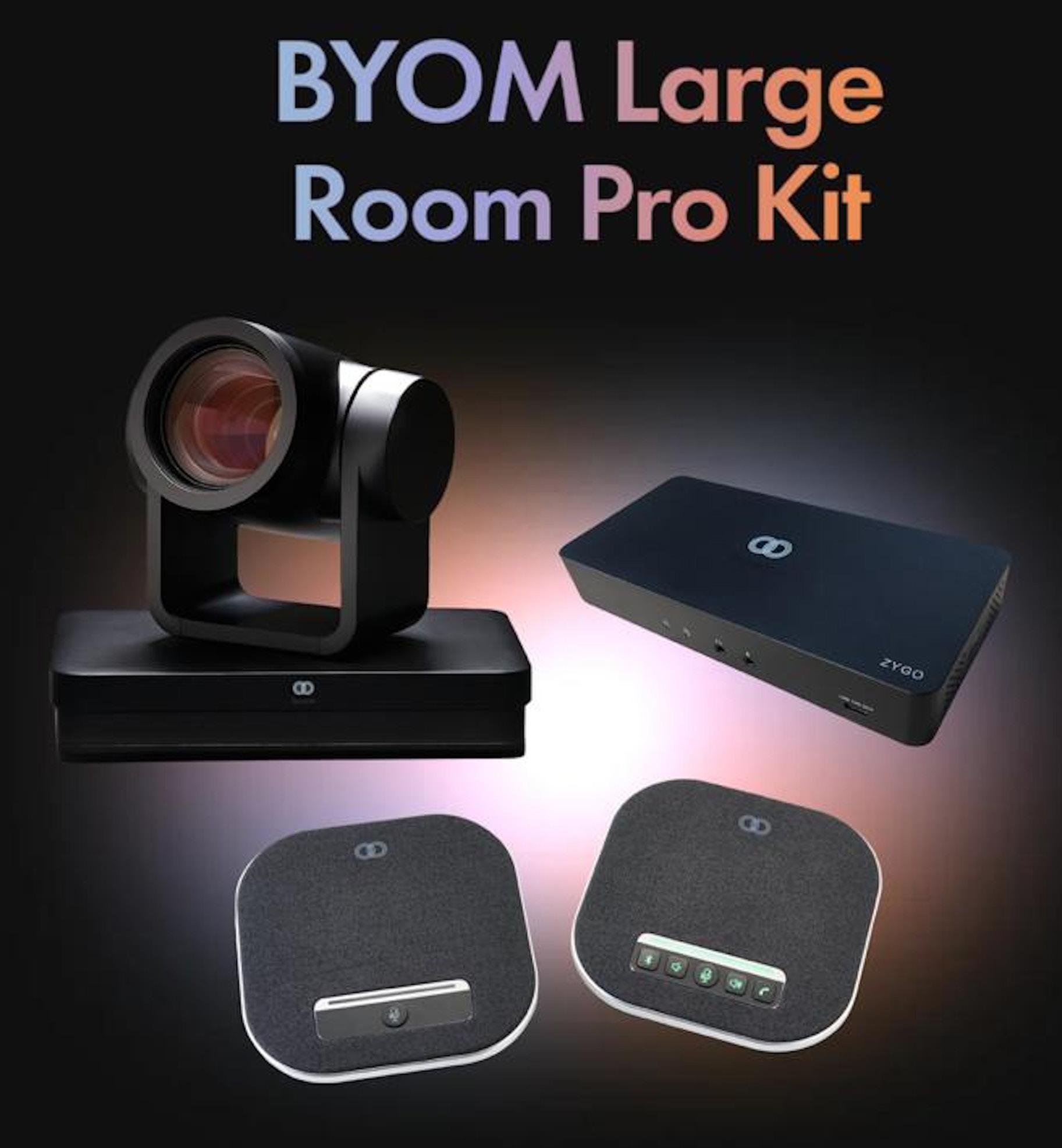
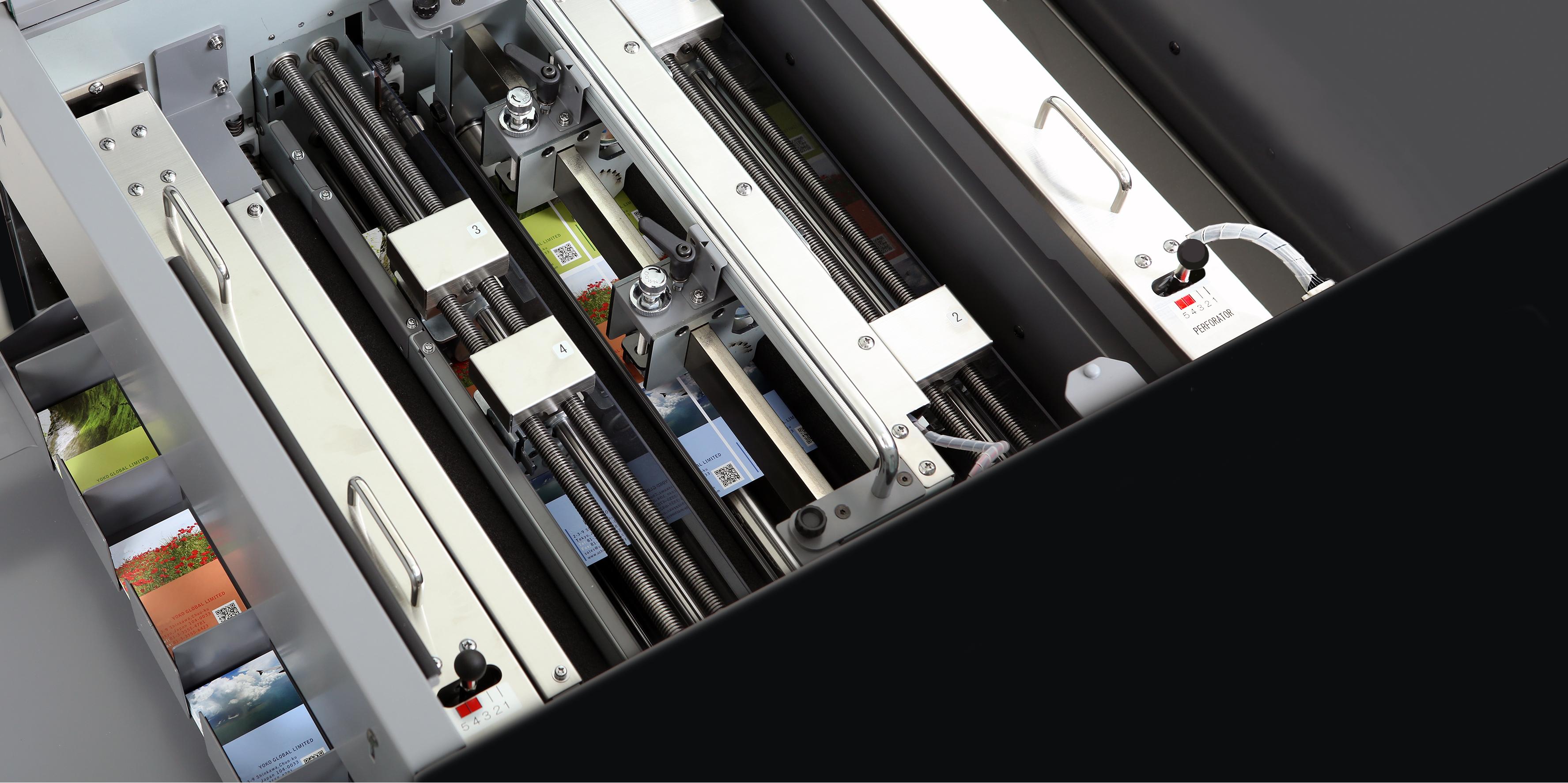







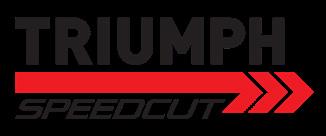
House passes “Big Beautiful Bill”: implications for small business, the economy and the political road ahead
Paul A. Miller, legislative counsel, Workplace Solutions Association

On May 22, 2025, the US House of Representatives narrowly passed President Donald Trump’s sweeping legislative proposal, officially titled the “One Big Beautiful Bill Act,” by a razor-thin margin of 215–214. Two Republican members—Rep. Thomas Massie of Kentucky, a consistent
dissenting voice on major legislation, and Rep. Warren Davidson of Ohio—voted against the bill. Rep. David Schweikert of Arizona attempted to vote but logged in just moments after the speaker closed the rollcall, resulting in his vote not being recorded. Meanwhile, Rep. Andrew Garbarino
of New York missed the vote entirely after reportedly falling asleep—an unfortunate consequence of the all-night debate and voting session.
Once the speaker had secured the crucial 215 votes, he quickly ended the voting period, allowing Republicans to claim a hard-fought, single-vote win.
Meanwhile, Democrats denounced the bill as favoring the wealthy over working Americans and criticized the process as chaotic and rushed. Their numbers were down one vote following the passing of Rep. Gerry Connolly (D-VA) earlier that week after a battle with esophageal cancer.
This comprehensive bill aims to extend key provisions of the 2017 Tax Cuts and Jobs Act, introduce new tax benefits and implement significant spending measures. While proponents argue that the bill will stimulate economic growth and provide relief to businesses and families, critics have expressed concerns over its potential to increase the national debt and disproportionately benefit higher-income individuals.
The Congressional Budget Office has scored the bill as adding $2.3 trillion to the US deficit over the next 10 years; while proponents of the bill claim it will generate a $750 billion increase in economic growth for American small businesses, potentially create over 1 million new small business jobs and result in families gaining over $13,000 in take-home pay. The bill also aims to provide tax relief for social security recipients and those earning between $30,000 and $80,000, with potential tax bill reductions of around 15 percent.
Business tax provisions
The bill includes the following tax provisions designed to benefit businesses, and particularly small businesses:
• Immediate expensing for research and development (R&D): Businesses can immediately deduct domestic R&D expenses, reversing the previous requirement to amortize these costs over five years. Foreign R&D expenses remain subject to a 15-year amortization period.
• Extension of 100 percent bonus
depreciation: The bill extends full expensing for qualified property through 2025, allowing businesses to deduct the entire cost of certain capital investments in the year they are placed in service.
• Business interest deduction relief: The legislation reinstates the earnings before interest, tax, depreciation and amortization-based calculation for business interest deductions under Section 163(j), easing limitations on interest expense deductions for businesses. This change applies retroactively for tax years beginning after December 31, 2023 and continues through 2025.
• Increase in qualified business income deduction: The deduction for qualified business income under Section 199A is increased from 20 percent to 22 percent, benefiting pass-through entities such as sole proprietorships, partnerships and S corporations.
Individual tax provisions
The bill also introduces several tax changes aimed at individuals and families:
• Child tax credit expansion: The maximum child tax credit is increased from $2,000 to $2,500 through 2028. The calculation of the refundable portion is modified to benefit lower-income families, potentially lifting up to 500,000 children above the poverty line.
• Standard deduction increase: The standard deduction is temporarily elevated by $2,000 for joint filers and $1,000 for individual filers through 2028.
• Elimination of taxes on tips and overtime: The bill proposes eliminating federal income taxes on tipped income and overtime pay, aiming to increase take-home pay for workers in service industries.
Spending measures
In addition to tax provisions, the bill outlines significant spending initiatives:
• Defense and border security: An additional $150 billion is allocated for defense spending, including investments in unmanned systems. The bill also provides $70 billion for border security measures, such as constructing barriers and enhancing surveillance capabilities.
• Healthcare and social programs: The legislation introduces stricter work requirements for Medicaid eligibility, which the Congressional Budget Office estimates could result in at least 7 million people losing health insurance coverage. It also proposes cuts to food assistance programs, potentially affecting up to 11 million individuals.
Economic growth and business investment
Proponents argue that the bill’s tax provisions will stimulate economic growth by encouraging business investment and expansion:
• Enhanced business incentives: Immediate expensing for R&D and capital investments is expected to incentivize businesses to invest in innovation and infrastructure, potentially leading to job creation and increased productivity.
• Support for small businesses: The increase in the qualified business income deduction aims to provide tax relief to small business owners, allowing them to retain more earnings for reinvestment and expansion.
Relief for families
The expansion of the child tax credit and the elimination of taxes on tips and overtime are intended to provide financial relief to working families, particularly those in lower-income brackets.
Fiscal impact
Critics have expressed concerns over the bill’s potential to significantly increase the national debt. The Congressional Budget Office projects that the bill could add approximately $3.8 trillion to the national debt over the next decade.
Equity and distribution
Analyses suggest that the bill’s benefits may be skewed toward higher-income individuals. While middle-class households might receive an average tax cut of $815, top 1 percent earners could see reductions of approximately $44,190, raising concerns about exacerbating income inequality.
Impact on social programs
The proposed cuts to Medicaid and food assistance programs have raised the alarm among advocacy groups and some lawmakers. The introduction of work requirements for Medicaid could lead to millions losing health insurance coverage, disproportionately affecting vulnerable populations.
Next steps: Senate consideration
The bill now advances to the Senate, where it faces potential revisions and further debate:
• Senate majority: Republicans hold a 53–47 majority in the Senate. However, internal divisions exist,
particularly concerning the bill’s fiscal implications and specific provisions.
• Potential amendments: Any changes made by the Senate would require the bill to return to the House for approval, potentially complicating its path to becoming law.
• Timeline: Republican leaders aim to finalize the bill by July 4, 2025, to prevent a looming debt crisis and deliver on campaign promises.
As the legislative process continues, the One Big Beautiful Bill Act remains a focal point of national debate, with its potential impacts on the economy, federal budget and American
Don’t waste paper
Mike Tucker, executive director, Workplace Solutions Association

Since I joined the industry 40-plus years ago, we have been talking about the responsible use of paper, recycling, sustainability, recycled content, responsible forestry, double-sided printing and so on. I recently came across an article in the September 18, 1918, edition of the National Association News (yes, I’m a little behind on my reading) that talks about paper conservation during World War One. I hope you enjoy it!
Paper is essential: It has been placed on the priority list only on the express condition that all wastes be eliminated and every economy be practiced. In doing this the Government will use its best efforts to provide sufficient paper for strictly needful purposes but nothing more. Every distributor,
converter or user of paper is hereby notified that the continuance of his supply is dependent strictly upon his observance of the rulings of the War Industries Board, one of which is that paper must not be wasted. Failure to comply with this requirement will lead to the withdrawal of any or all priority privileges, without which the supply cannot be maintained.
Seven reasons why paper must not be wasted
1. The government’s requirements for all kinds of paper are increasing rapidly and must be supplied.
2. Paper requires a large amount of fuel which is essential for war purposes. A pound of paper wasted represents from one to three pounds of coal wasted.
3. Paper contains valuable chemicals necessary for war purposes. Economy in the use of paper will release a large quantity of these materials for making ammunition or poisonous gases.
4. Paper making requires both labor and capital, both of which are needed in war service.
5. Paper making requires transportation space. Economy in the use of paper will release thousands of freight cars for war purposes.
6. Greater care in the purpose and use of paper will save money. Your savings will help finance the war.
7. Strictest economy in the use of paper will prevent shortage.
War Industries Board
B.M. Baruch, Chairman

About CBIZ Employee Benefits

CBIZ Employee Benefits is the single-source benefits solution for members of the Workplace Solutions Association. With a national presence, enrollment support, and supplemental communications materials, CBIZ can help you meet the needs of your employees in an everchanging market.
Our team of specialized experts will collaborate with you to develop an actionable plan tailored to your unique pain points and goals. This is not cookie-cutter consulting. With thousands of clients nationwide, and more than a decade of proven results, we’re the partner you can count of to provide the strategic benefits solutions you need.
To learn how we can help you please email or click the link:
Ryan Oursler at ryan.oursler@cbiz.com
Contact CBIZ
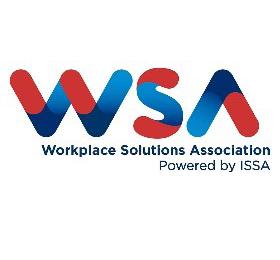

LEARN HOW CBIZ EMPLOYEE BENEFITS CAN HELP WITH YOUR UPCOMING RENEWAL
Are you looking to lower your rates while offering improved benefits to your employees?
Explore our free on-demand webinar to discover strategies to reduce costs, options for optimizing benefits for your team, and more!
Watch Now

By Rick Marlette
USING DATA TO DEFEND YOUR BUSINESS
In the last two articles, we talked about all the data we have available today. Here, we discuss what we can do with it. How can this data help independents gain more business? Better yet, how can it prevent them from losing existing business to the nationals?
It’s not the 1990s anymore. Today’s customers don’t care about the latest barcode-scanning, report-producing, touchtone-taking, vending machine-dispensing gimmick that Corp X is touting. Customers just want to save money.
Today’s savvy dealer stopped falling for the salesperson by day, pricing expert by night foolishness long ago. These smart dealers are keeping salespeople far away from their pricing strategy. Dealers just want to gain customers and make more money.
Of course, if you ask Amazon, it will tell you it has the lowest prices. This is why it’s attracting large public-sector customers away from independents— or at least, that’s what it will argue. And it’s happening everywhere. Across the country, Amazon is winning
entire states, cities and public-school systems with one simple message: “We’re Amazon—of course we have the lowest prices.” And it’s working.
So, what can we do about it? First off, we need to stop sitting on our hands and just watching this happen. We already know Amazon is aggressively targeting the public sector market, taking business directly from independents. But here’s the good news—we also know a few critical facts:
• Amazon charges sellers a premium of around
30 percent just for the privilege of selling on its platform.
• Amazon’s pricing is notoriously inconsistent— far from the “lowest prices” it constantly promotes.
• We have hard data to prove these points.
Armed with these insights, independents now have a strong opportunity to directly challenge Amazon’s claims and reclaim their share of public sector business. I can already hear the whispers: “Oh, you should be scared—big, bad Amazon is going to come after you.”
Data Pricing

Yes, it’s big; and calling its business tactics merely “bad” hardly does justice to its ruthless reputation. But even so, this isn’t my first rodeo—not by a long shot. In 2007, I exposed potential overcharging by Office Depot to the state of Georgia. I did this by making an open records request to the state asking for its Office Depot purchase history. I then compared this purchase history to the quoted prices from Office Depot’s bid price. Office Depot had won the contract over several local independents. But the
quoted bid prices were not being honored: in total, I found around $1 million in overcharges.
Office Depot hired the most prestigious law firm in Washington DC (the one that defended Bill Clinton) and sent me a letter threatening to ruin my life. My attorney and I prepared a report of the data setting out each overcharge line by line. I showed Office Depot the data and never heard from its attorneys again. Show me the data!
The same thing is now happening with Amazon. Amazon has convinced these public sector entities that it is their best choice, but this is clearly and demonstrably not the case. We can now get usage reports from public sector entities that purchase from Amazon and the findings are shocking.
We are seeing everything from clearly personal purchases such as sex
toys (yes, that is correct) to wildly inconsistent pricing. One school bought five identical printers and paid five different prices, ranging from $429.00 to $548.90, for the exact same item. The school could have saved almost $600 had all five printers been purchased at the lowest price charged. When we laid Amazon’s prices side by side with those of independent suppliers, the truth emerged with striking clarity: independent pricing was—wait for it—33 percent lower overall. Perhaps this shouldn’t have come as a surprise. After all, Amazon’s prices consistently hover around 30 percent higher, reflecting the steep premium it charges sellers for the privilege of using its platform. The harsh reality is this: Amazon isn’t saving public sector agencies money. It’s quietly inflating costs, despite all its slick promises to the contrary.
Here is what you should do if you have lost a public sector account to Amazon:
• Locate the open records division of the agency’s governing body, such as a state government. This can usually be found on Google.
• Request usage reports for purchases the agency made from Amazon. To obtain this information, you must be a resident of the state in which you are seeking it.
• Obtain the full details, including part numbers, of all purchases. Do not accept a summary report. Amazon is supposed to provide the details.
• Send the report to me and I will let you know what it will cost to get it converted—that is, matched up to your wholesaler’s item numbers.
• You can then add your selling prices for the items.
• This data can be run

Data Pricing
through our AI process to analyze it and produce a report you can present to the public sector agency.
It is almost certain that:
• the agency is being overcharged;
• the pricing is wildly inconsistent; and
• the number of personal items being purchased is abnormal.
These are your tax dollars being spent recklessly on Amazon—and you are certainly within your rights as a taxpaying citizen to point out these issues to the agency. Change is never without friction, especially when it challenges the decisions of those who first embraced Amazon. Yet
beneath that resistance simmers a deeper current: a growing public demand for transparency and fiscal responsibility. Citizens are increasingly unwilling to tolerate unnecessary or wasteful government spending, and their calls for accountability are only growing louder.
Stick to your plan and go through with it, always being respectful and open about the facts. While it may upset some, you stand the possibility of winning back some business you may have lost due to false claims.
When I was working on the state of Georgia case, I was shocked to find that the state had never audited a vendor, as far as they knew
or remembered. This is all too common: most of these deals are made, the agency signs the deal and then expects the vendor to follow the agreement, never checking if it is in fact doing so.
This was a big issue for the independents involved with the state of Georgia. Some feared that pointing out the state had made a “bad” deal could get them blacklisted as troublemakers.
However, there is no evidence that anyone got blacklisted. It all depends on the professionalism of the people involved. Remember: in this case it’s the vendor, Amazon, that is the troublemaker—not the whistleblower.
My hope is that many
of you will seize this opportunity, expose the truth and reclaim the business wrongly handed to Amazon. Public outrage over corporate misconduct is at an all-time high and people are ready to support those who stand up against it.
I experienced this firsthand when a local TV station covered a story about a school system being overcharged. The public response was so overwhelming that the station returned for three additional interviews, airing the segment repeatedly over three straight weeks.
So, gather those usage reports from your local public agencies, get the facts in hand and let’s start taking back what’s ours.

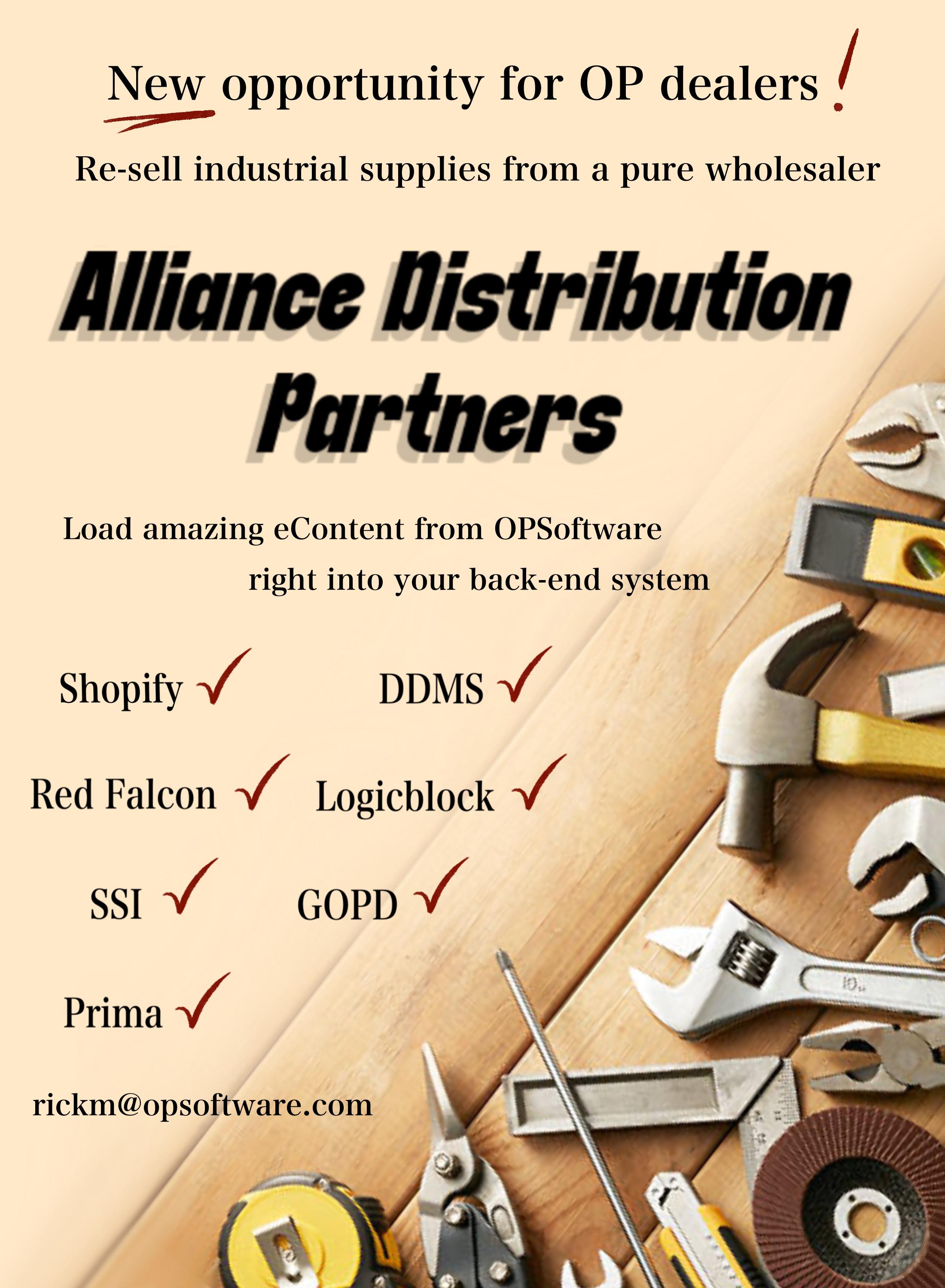
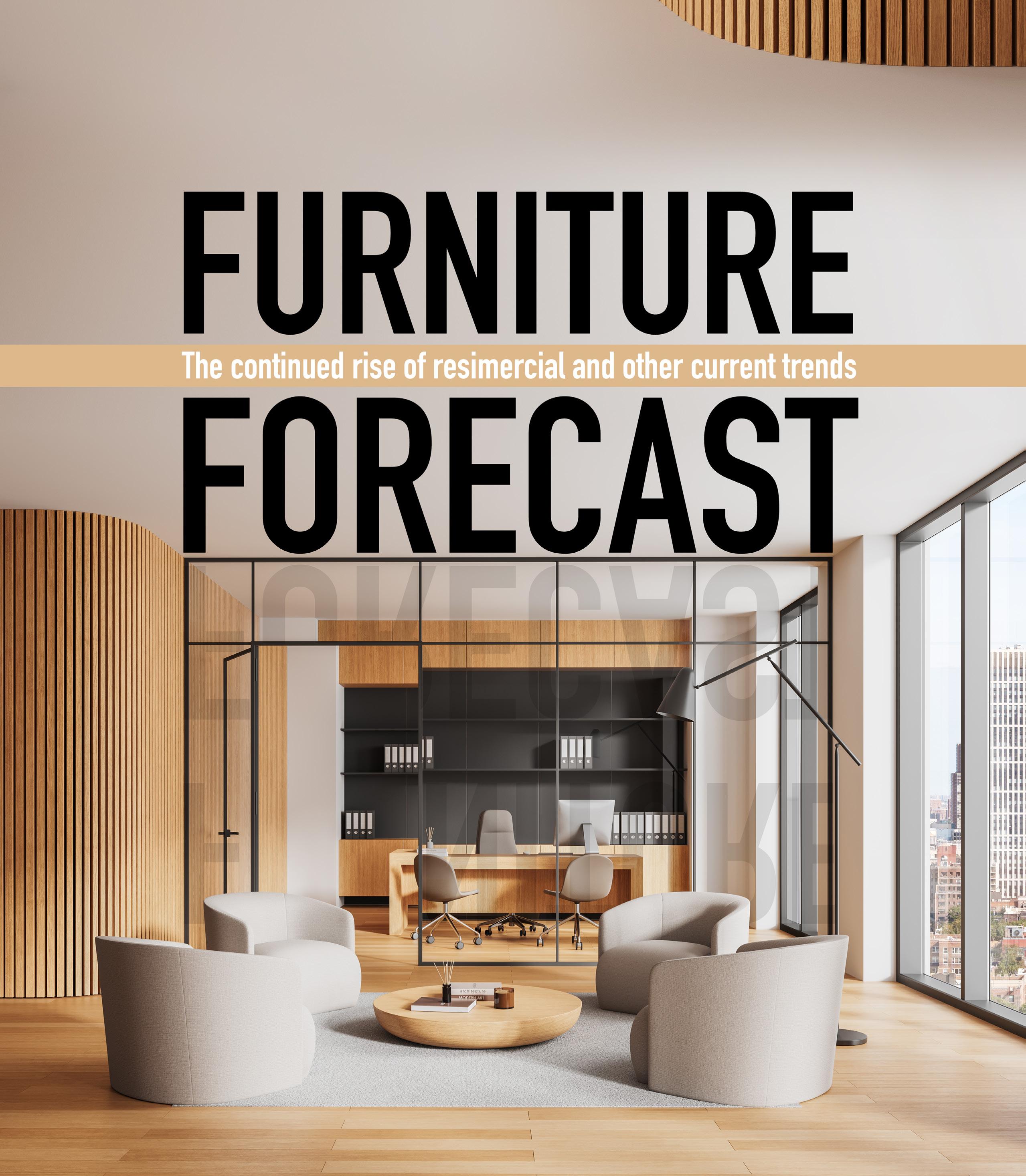
by Lisa Veeck
Smart, sleek and functional furniture design can transform a drab interior into an irresistible environment. The convergence of style, comfort and utility in a commercial setting boosts employee morale, enhances job satisfaction and increases productivity. Dealers that can help employers create this atmosphere enjoy higher sales and a reputation for quality. However, to achieve this, they must keep pace with evolving customer needs and desires. With this in mind, let’s hear from a few dealers on the current furniture trends that are keeping their design teams busy—and their bottom lines growing.
Sales trends
At Intivity, Rochester, New York, furniture accounts for 45 percent of its annual sales of $60 million. Nate Morales, vice president of the strategic sourcing division, highlights the latest developments they have observed in the sector: “As employers ask employees to return to work, more people are opting for workstation systems and tools that provide greater privacy, such as dividers. Employers are also requesting additional amenities
to make the workplace more appealing for those returning. Company welcome areas are becoming increasingly café-style. Kitchens and lounge areas feature more comfortable furniture to make offices feel more like home.”
When it comes to color and material, he notes buyers are opting for “natural and light wood tones, with a pop of color—a splash of bright like on a seat cushion or a panel wall.”
president Paul Dickerson. “They don’t have work permits to perform the work, so there’s less liability for them.”
While sit-to-stand desks are a big seller for The Orange Stationer, Dickerson reveals that not all recipients are convinced of the benefits and many are left simply gathering dust in a corner of the office.
Elaborating on the latest style trends, Dickerson agrees with Morales that
“Design is not just what it looks like and feels like. Design is how it works.”
Steve Jobs
Furniture similarly generates 45 percent of sales for The Orange Stationer and sister outfit The Office Downtown, in Orange, Texas. The company primarily supplies commercial-grade laminate furniture to the industrial sector, purchasing from between two and five vendors.
“We sell to a lot of the gas and oil companies here and usually assemble the furniture before we deliver and install it,” explains owner, operator and
employers are seeking to brighten up the workplace: “They’ve moved away from the gray that was dominant for the last few years toward wood grains and lighter natural colors. A few customers like the clean look of incorporating steel in their furniture; and for executive, higher-end furniture, it is solid wood or wood veneer. But the vast majority of our customers order commercial laminate. While some customers want open spaces, most opt for furniture

Cover Story
for private offices, whether they are formed with walls or cubicles—but definitely more private spaces. Overall, especially since COVID-19, companies want new surroundings with new furniture. They are looking to make their spaces inviting places to work and play to attract new hires and lure current employees back to the office.”
DBI, Lansing, Michigan, specializes exclusively in furniture, which brings in annual sales of $24 million. The company’s largest customers are in the government and corporate sectors. According to sales and marketing manager Nicki Zyla, two standout trends shaping the industry are adaptability and a stronger focus on employee experience. “We’re seeing a shift toward flexible spaces that support spontaneous collaboration—think mobile tables and chairs on casters, along with tech-integrated furniture like powered tables that can easily adapt to different needs,” she says. “Another major trend is the rise of resimercial design, where companies are choosing furnishings that feel more like home—comfortable yet durable pieces that help create welcoming lounge areas. We’re often designing spaces with cozy, supportive
seating that still support tasks like writing. At the same time, there’s growing attention to employee wellbeing, with an emphasis on ergonomic solutions like sit-to-stand desks.”
Zyla notes that regional differences often influence office and furniture trends. “Workplace design can vary significantly based on location,” she explains. “Here in Michigan, we’re seeing a shift toward more casual environments. Companies are moving away from traditional layouts, favoring open concepts and greater transparency using elements like movable glass dividers to maintain separation while still allowing visibility and connection.”
Adaptability is also influencing the materials customers are choosing. “We’re seeing increased demand for more flexible options—like breathable mesh and wood laminates in soft, earthy tones,” Zyla adds. “Naturally, durability and ease of maintenance remain essential in any commercial environment.”
Business Office Outfitters (BOO) in San Diego, California, is another 100 percent furniture-focused dealer. Last year, revenues topped out at $9–$10 million, with about 80 percent of sales
generated by middle-grade and used furniture for companies with mid-sized budgets. The remaining 20 percent consisted of higher-end furniture for customers in sectors such as healthcare and IT.
Marketing manager Javier Castro observes many of the same sector dynamics noted by his peers.
“Customers are using more light colors, like pale gray and white, to give the illusion of openness,” he reports.
“There is a shift away from standard desks to more sit-to-stand models. In breakrooms, companies want tables that usually hold eight people but can accommodate up to 20. They also want adjustable options to meet Americans with Disabilities Act requirements.
“Fake wood and vinyl are the most popular materials. Few customers are opting for real wood, since it is extremely expensive compared to steel—especially given the tariffs. However, overall, companies tend to spend more on higher-quality furniture in lobbies and other areas to make a good first impression. Also—especially here in Southern California, where so many employees are still working at least part-time from home—companies are


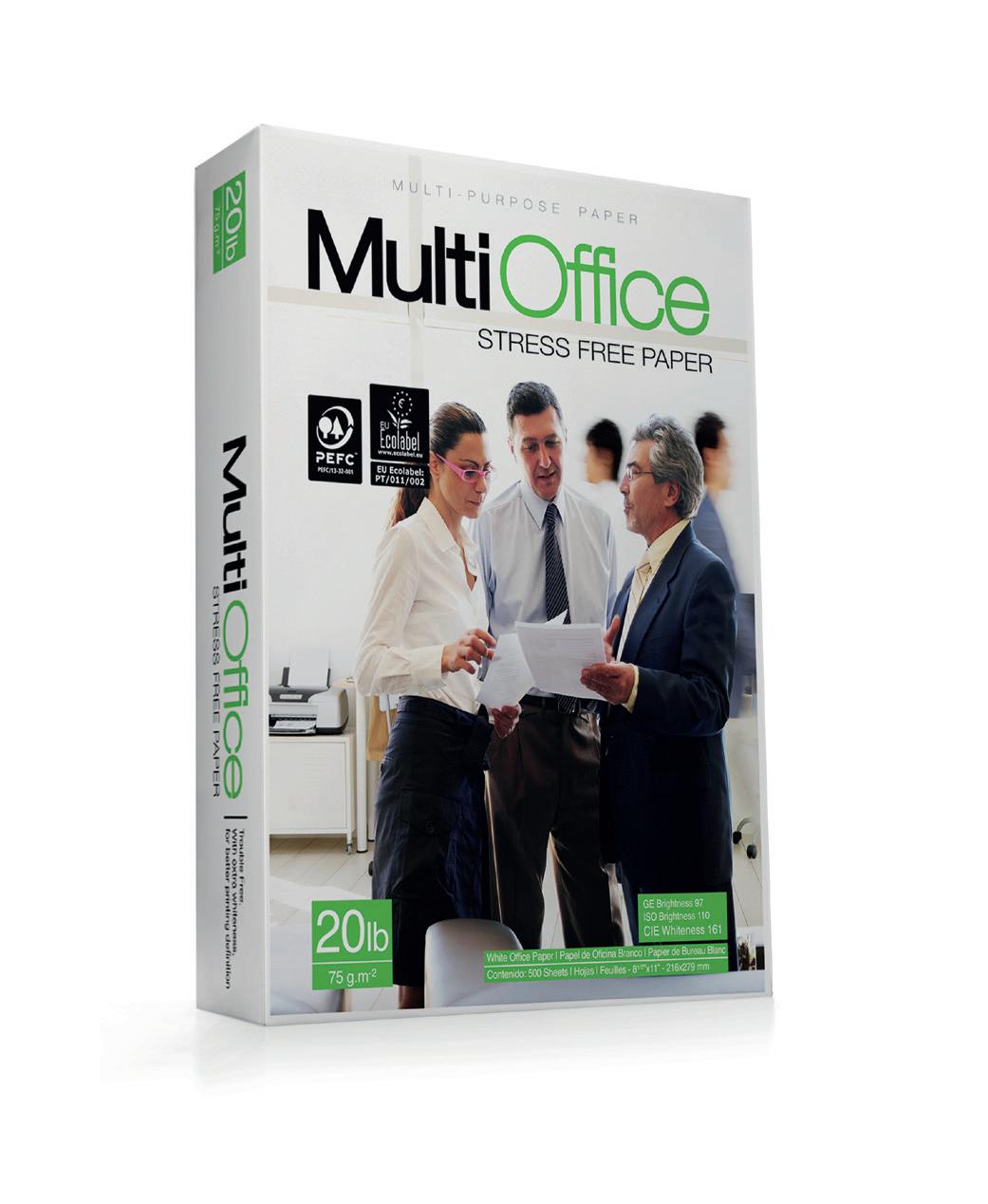
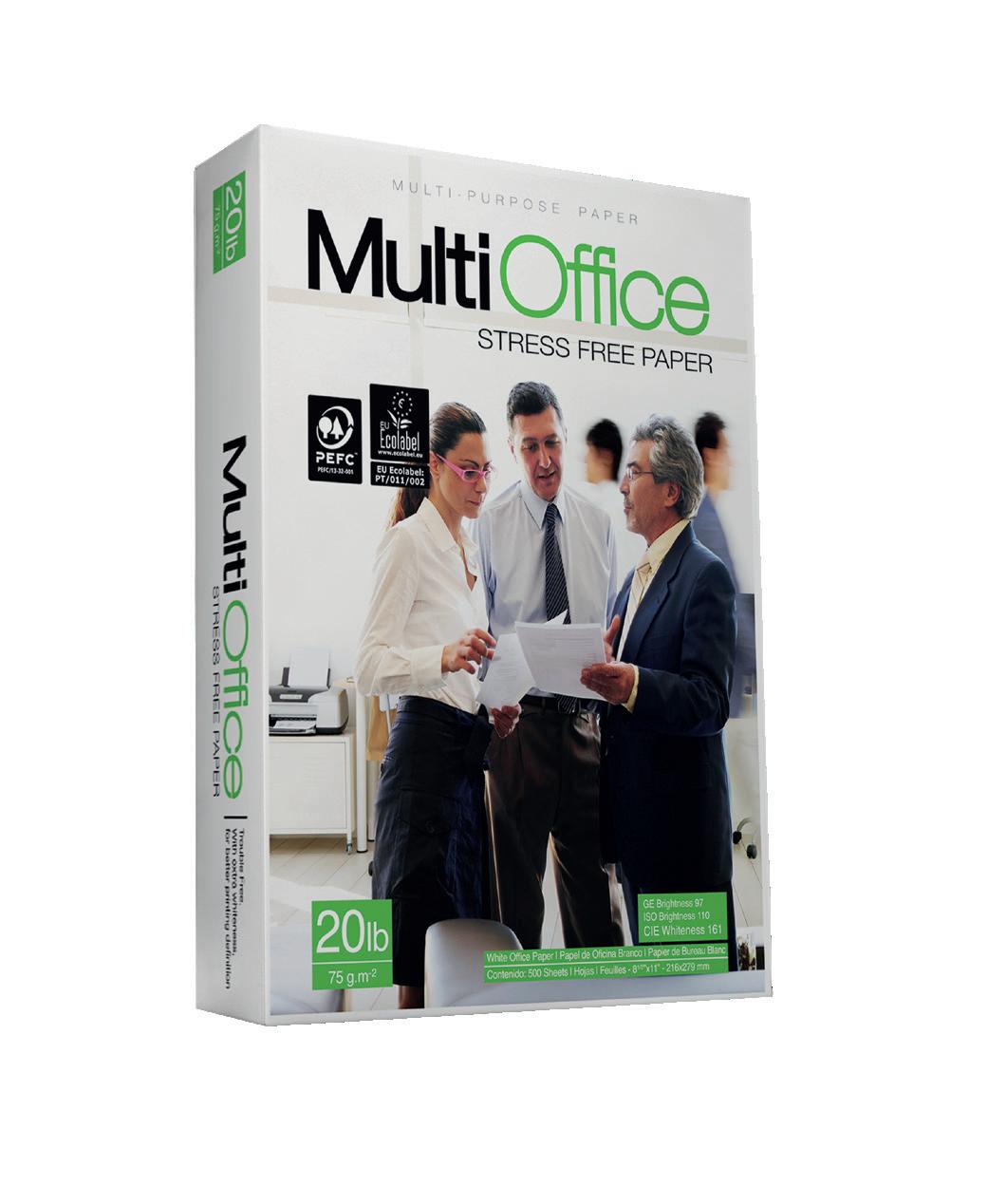

looking for hybrid furniture that works in the office but has the feel of a home.”
Castro also highlights an increase in sales of ergonomic furniture, including items such as chairs with lumbar and neck support.
The Amazon effect
The dealers we interviewed largely shared the view that Amazon is not a major threat in the furniture segment, with nothing comparable to its giant footprint in office supplies.
“We’re grateful for every opportunity that comes our way and value the trust our clients place in us,” Zyla says. “While companies like Amazon play a role in the market, our approach is fundamentally different. We focus on tailored solutions, long-term relationships and hands-on service—things that go beyond transactional experiences.”
Castro agrees that Amazon’s furniture sales are likely to be a stray item or two at most, adding: “Many customers buy a chair from Amazon one time, but it doesn’t last, so they buy a higher-quality one from us two to four months later.”
Going green
Sustainability remains high on the agenda for many buyers. “It’s definitely
front and center,” says Morales. “Job candidates are looking at what employers are doing to reduce their carbon footprint to determine if the company is a good fit. It’s part of the competitive landscape for hiring. Employers, in turn, are aligning with manufacturers focused on sustainability and how they report back on their efforts. Customers want to see what manufacturers are doing. They don’t just want talk; they want reporting—they want to know manufacturers’ carbon footprint from the factory to their hands.”
Top tips for growth
Zyla encourages furniture-focused dealers to prioritize design resources. “Investing in an in-house design team allows us to focus on creating tailored solutions,” she explains. “When customers can see, touch and experience visual concepts firsthand, the designs often speak for themselves and naturally set us apart from the competition.”
Dickerson suggests: “If you are looking to grow your furniture business, invest in good 3D rendering software. It’s worth it to separate yourself from the big boys and show value to your customers. We have
been in business for 73 years and we don’t have outside sales reps. We’ve established a reputation for ourselves as a dependable dealer that is deeply involved in the community. Whether it’s office supplies or furniture, instead of cold calling, I recommend getting involved and networking with not-for-profits and other organizations in your community.”
Castro sounds a note of caution for dealers keen to dip their toe into the furniture market. “It’s not simple as you may think,” he warns. “There are numerous brands and options available. I recommend having an expert in space planning design. You need to adapt the furniture to the customers and help make the office a better place for employees to work so they are more comfortable and productive. Get advice from an expert who can help put you on the right track.”
Morales is similarly convinced that trusted alliances are key: “If you go to sell furniture to customers and are all over the place, it’s hard to get a good start in the sector and it is difficult to replicate the process. Pick a manufacturer and create a partnership with the company. Align with a reputable company like a Steelcase or HON, and you will have success.”
Of fice Papers Collection
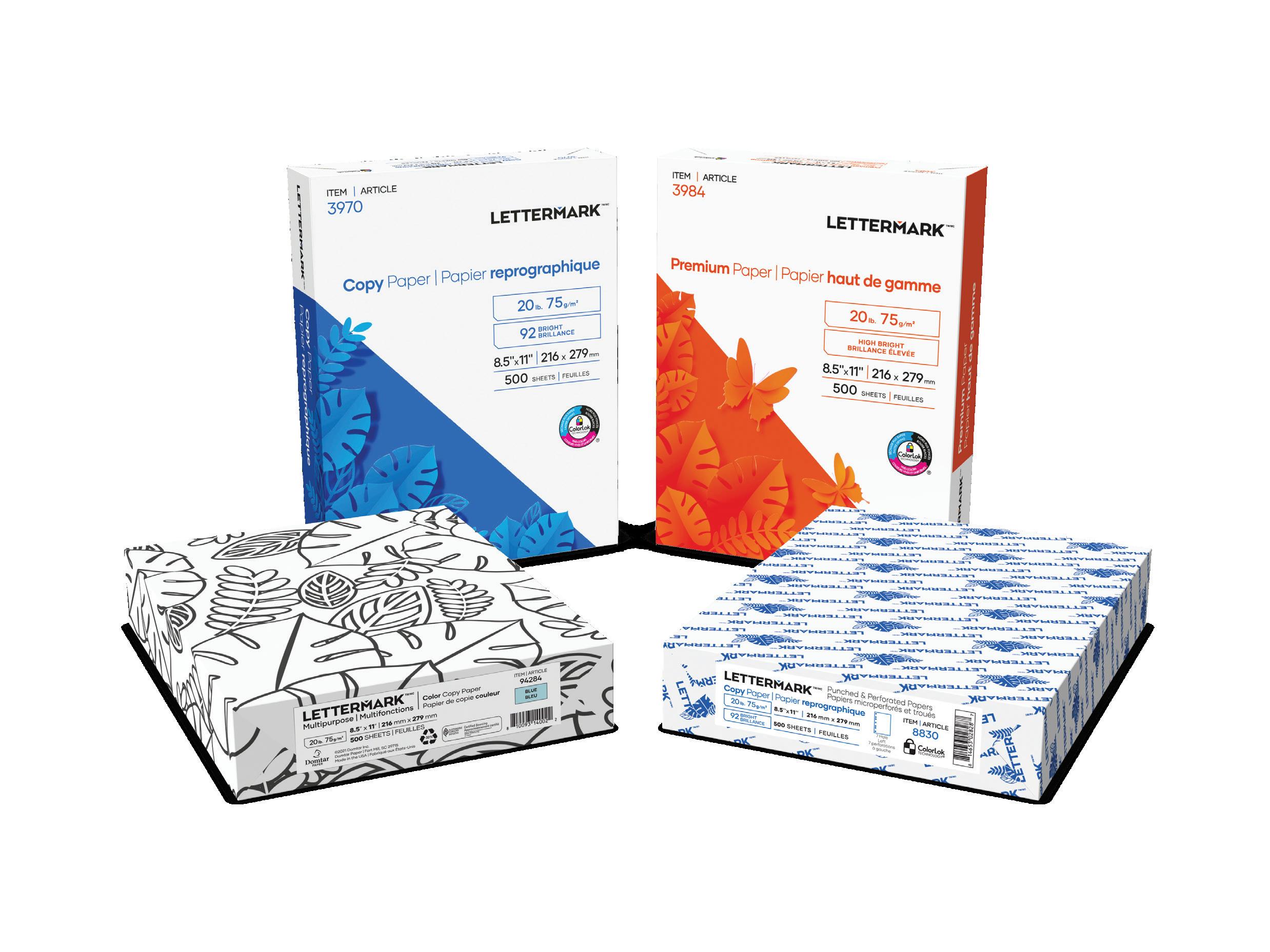


Lettermark® Copy Paper
Lettermark® Premium Paper
Lettermark® Colors Multipurpose Paper
Lettermark® Punched & Perforated Papers

How ChatGPT’s new internal data integration can give you an edge over the big box players
For those in the independent office products channel— fighting the good fight against big-box giants like one that starts with an “S”—the edge often comes down to how well you use the tools at your disposal. Great customer service. A nimble salesforce. Real relationships. But now, we’re entering a new chapter in the competition: AI that
understands your internal data. OpenAI’s latest rollout for ChatGPT (available today in its Team edition and coming soon to Enterprise) makes it possible to connect tools like Google Drive and Microsoft SharePoint directly to ChatGPT. This isn’t just a shiny toy. For dealers, it could mean AI-powered access to everything from inventory files to product
spec sheets to service logs without needing to dig through folders or ping the warehouse team.
I’ve been advising dealers on AI adoption for a while now and this is one of the most exciting (and practical) steps I’ve seen. You’re not paying extra for it either, which is awesome. It’s included in the ChatGPT Team plan. This new feature brings your private knowledge base to your fingertips and is super-easy to set up.
Here’s what that means for the independent dealer channel.
From public AI to personalized AI Until now, ChatGPT’s biggest
limitation for business use was that it didn’t know your business. Sure, it could draft an email or write a blog post; but when it came to answering questions like “Do we have HP 202A in stock?” or “What are the specs on that sit-stand desk we quoted last month?”, it came up empty, unless you pasted in the information yourself. That has now changed. With its new internal knowledge connectors, ChatGPT can link to your Google Drive or SharePoint account and act like a hyper-fast assistant who has read everything your company’s ever saved. It can answer questions based on quotes, price lists, delivery schedules, service
West McDonald, founder of GoWest.
ai, is a recognized expert in AI solutions, with extensive experience across various technology sectors. His work focuses on generative AI applications and strategies for maximizing recurring revenue, guiding businesses toward innovative growth. West is dedicated to fostering a culture of learning and excellence through AI-driven innovation.

notes—any document it can access through these platforms. Ask it question such as the following and it’ll automatically pull the answer from your own internal files:
• “Summarize the latest bulk pricing from ACCO Brands.”
• “What was the margin on the Acme legal pads we quoted Customer X on last week?”
• “Do we have customer support documentation for the new Microsoft Surface unit?”
How it works (without tech jargon)
Getting set up is as easy as connecting your ChatGPT account to Google Drive or SharePoint. Under the
ChatGPT Team plan, there’s now a “Connect your apps” option where you link your workspace storage to your ChatGPT account—kind of like how you link Google Drive to a CRM or scheduling app.
Once connected, ChatGPT becomes aware of your documents. It doesn’t just grab everything blindly; it uses your question as a cue to pull relevant info. Ask it to summarize your 2023 sales strategy and it’ll find that file. Ask about your IT supply inventory and it’ll scan your spreadsheet or documents with those details.
You can even turn on a toggle labeled “internal knowledge” when you really want it to prioritize your company’s data over information available on the Web. This is where things get powerful: the AI stops being generic and starts speaking your language.
Who gets it (and what it costs)
Right now, this capability is part of the ChatGPT Team plan, which costs about $25–$30 per user, per month, depending on how you subscribe. It’s also coming to ChatGPT Enterprise customers later this year. Typically, these are large organizations, not the likes of most of us.
Here’s a quick breakdown:
• Free and Plus users: No access to internal data features. You can still upload files, but you’re flying manual.
West McDonald

• ChatGPT Team: Internal data via Google Drive available now. SharePoint and other connectors (e.g., Slack) coming soon. Great for small to mid-sized dealers.
• ChatGPT Enterprise: Coming soon. Includes more admin controls, compliance tools and expanded integrations. The real kicker? Unlike Microsoft Copilot and Google Gemini—where AI work assistants are an add-on for $30 per month, per user—ChatGPT includes these internal knowledge features in the base price of Team. That’s a budget-friendly win for independents.
Real
use cases for independent dealers
Let’s be honest: we don’t have armies of IT staff or data scientists. We need tools that just work. Here are a few ways I see this feature being used in the channel:
• Inventory checks without the wait: Got an Excel file in your Drive with current warehouse stock? ChatGPT can read it and answer questions like: “How many boxes of Pilot G2 pens do we have left in Toronto?” Of course, this won’t work with database price books—at least, not yet.
• Product specs on demand: Need to pull up a tech sheet or dimensions from a PDF you’ve stored? Ask ChatGPT: “What are the weight specs on the VertDesk Pro in our catalog folder?”
• Price lists and quote lookups: When a customer calls asking for last year’s pricing or a copy of their last quote, just ask: “What was the per-case cost for 8.5x11 Hammermill in the quote we sent to Draycott Law?”
• Report summaries and
West McDonald

sales strategy: Feed it last quarter’s sales data, then ask: “What product categories underperformed in Q2 compared to Q1?” It will generate a summary and even suggest where to focus next.
• Training and support documents: Got a folder of PDFs and docs for new hires or customer service scripts? Ask ChatGPT to generate FAQs, onboarding steps or even test questions for reps.
What about Microsoft Copilot and Google Gemini?
You might be wondering how this stacks up against what Microsoft and Google are offering—especially if you’re already using their suites:
• Microsoft Copilot: Copilot lives inside Microsoft 365 (e.g., Outlook, Word, Teams) and is deeply integrated with your
files and emails—but it costs an extra $30 per user, per month. That adds up fast. It’s great if your entire workflow lives in Microsoft-land, but not every dealer is fully locked into that ecosystem.
• Google Gemini: Google’s new AI is embedded across Gmail, Docs and Drive. It’s smooth if your company is all-in on Google Workspace.
Like Copilot, though, it’s priced separately and doesn’t play as nicely across other platforms like Slack or Salesforce.
ChatGPT with connectors ChatGPT is more platform neutral. Use Microsoft or Google? Doesn’t matter. It can tap into either—Google Drive today, SharePoint soon. And since it’s part of your ChatGPT Team or Enterprise plan, there’s no added cost for this integration.
So, if you’re already experimenting with ChatGPT (or thinking about it at least), this new feature just made the case stronger.
Privacy, control and IT considerations For those concerned about security and privacy (especially in the wake of increasing compliance requirements), here’s the scoop:
• Your data isn’t used to train OpenAI’s models if you’re on Team or Enterprise plans.
• Admins can manage which data repositories (e.g., Drive or SharePoint) are connected.
• ChatGPT only sees files your account has permission to access.
• You can disconnect integrations and delete data at any time.
If you’re managing quotes, client records or inventory data, these are critical
concerns and OpenAI seems to be handling them seriously.
There’s a saying I often use when helping independent dealers futureproof their business: “If you can’t find your own info faster than your customer can find it online, you’ve already lost.” This new ability to let ChatGPT connect to your internal knowledge flips that on its head. Now you can have an answer at your fingertips. Not someday. Today.
And the best part? You’re not spending an extra dime to get it. You just have to know it’s there and be willing to put it to use.
If you want help getting started or need to see how it could fit your specific stack—whether you’re using Drive, SharePoint or a mishmash of both—we’re here to help. You can email us at west@gowest.ai or visit www.gowest.ai to learn more.
THE NATIONAL BUSINESS PRODUCTS INDUSTRY PRESENTS
SEPTEMBER 25, 2025 NAVY PIER, CHICAGO, IL FOR ALL TOUCHED BY CANCER
HONORING

JOHN FELLOWES
President and CEO, Fellowes Brands
City of Hope® and the National Business Products Industry Group are proud to honor John Fellowes with the 2025 Spirit of Life® Award for his dedication to expanding access to breakthrough research, compassionate care and innovative treatments for cancer patients and their families.
Join City of Hope in honoring John Fellowes. Together, we will advance lifesaving cancer research, treatment and care.
To learn more and register, visit cityofhope.org/nbpi. For questions, contact NBPIevents@coh.org.
Jennifer
Vitanzo STRUT YOUR STUFF

HOW BUILDING AUTHORITY BUILDS AN AUDIENCE
In today’s crowded marketplace, relying solely on a good product or service is no longer enough. To truly stand out and capture the attention of potential customers, you need also to establish yourself as an authority in your industry. That
comes down to two things:
• showcasing your expertise; and
• becoming the go-to resource that your target audience relies on and trusts implicitly when seeking solutions to their problems.
Think about this scenario: you’re faced with a choice between two similar brands. One brand seems more knowledgeable, experienced and trustworthy; in short, it exudes more authority. As a result, it appears to be
the better, smarter, safer choice—making it the one you’re more likely to choose. That’s why being perceived as an authority is one of the business world’s most valuable currencies: when you are perceived as an authoritative voice in your industry, customers are more likely to choose your brand over the competition. You might think that establishing authority is ego driven, but it’s not. It’s
Jennifer Vitanzo is a content writer for Fortune Web Marketing. She has been writing professionally for over 20 years. When not wordsmithing, Jenn is performing onstage as a singer/songwriter or out in nature photographing wildlife for conservation organizations.

about creating a sustainable competitive advantage that translates directly to your bottom line. A business that invests in building authority doesn’t just win trust—it often commands premium pricing, while facing less resistance to purchasing overall. Here’s why.
How authority transforms brand visibility Consumers are bombarded with thousands of marketing
messages daily. If you want to succeed, you need to find ways to differentiate yourself, cut through the clutter and give yourself an edge. Being considered an authority in your sector is one of the top ways to do so, because it results in the following advantages:
• Heightened media attention: Journalists and content creators need authoritative sources to quote and feature. Establish yourself as a thought leader and you open doors to free publicity opportunities that would otherwise cost thousands in advertising dollars.
• Higher algorithmic preference: Search engines and social media platforms elevate authoritative content. For example, Google’s E-E-A-T guidelines (Experience, Expertise, Authoritativeness and Trustworthiness) explicitly prioritize content from recognized authorities, leading to higher search rankings and better organic visibility.
• Increased word of mouth: When people discover a true authority in a field, they tend to share this discovery with others facing similar challenges or with similar interests. This organic sharing creates a snowball effect that expands your audience reach without additional marketing spend.
• Speaking and partnership invitations: Industry conferences, podcasts and complementary businesses like to connect and partner with authorities, putting your brand in front of your target audiences at minimal cost. The trust factor: authority’s greatest gift
In an age of increasing consumer skepticism, trust has become the most elusive and valuable element in the buyer-seller relationship. What’s one of the most effective methods that modern businesses can use to gain the trust of their customers?
Authority-building. When consumers perceive you as an authority, they enter the relationship with a presumption of competence and goodwill, which dramatically shortens the sales cycle and reduces the friction typically associated with converting prospects into buyers.
Trust derived from authority also builds remarkable resilience against competitive threats and occasional missteps. Brands with established authority enjoy greater customer forgiveness when mistakes happen and stronger immunity to price-based competition.
The bottom-line impact of authority
The business benefits of authority aren’t merely theoretical—they translate
directly to measurable financial outcomes, including the following:
• Premium pricing power: Customers that see your brand as an authority willingly pay more for your products and services.
• Lower customer acquisition costs: The more people who know and trust your name, the more inbound inquiries increase and sales resistance decreases, and the lower the cost of acquiring new customers, leading to improved overall profitability.
• Higher conversion rates: Authoritative brands typically enjoy conversion rates several times higher than non-authoritative competitors within the same industry, even with identical offers.
• Extended customer lifetime value: Customers who choose a brand based on perceived authority tend to remain loyal for longer and spend more over the lifetime of the relationship.
• Diversified revenue opportunities: Established authorities have an easier time leveraging their recognized expertise into adjacent product lines, consulting services or educational offerings. Practical ways to build authority
Genuine authority is not built overnight. Steadily elevating your position in your industry requires the consistent
Jennifer Vitanzo

application of the right strategies. Here are a few key approaches that successful authority-builders employ:
• Develop your own point of view: Don’t just repeat conventional wisdom—set yourself apart by offering a clear and distinctive perspective on industry trends, challenges and solutions.
• Contribute to industry publications: Know which publications and websites your target audience seeks information from and write articles for them.
• Establish thought leadership content: Create and maintain a consistent content publishing schedule of insightful blog posts, videos, podcasts or newsletters that demonstrate your expertise.
• Speak at industry events: Pursue opportunities to present at conferences, webinars and industry gatherings where you can showcase your knowledge to relevant audiences.
• Build strategic partnerships: Enhance your credibility through association by aligning with other respected authorities and organizations in complementary fields.
• Engage meaningfully in community discussions: Demonstrate expertise by participating in industry forums, social media groups and Q&A platforms and offering helpful contributions.
• Create original research: Conduct and publish original studies, surveys or data analysis that provides
consistency, authenticity and continuous learning:
• Generosity: Share what you learn, rather than gatekeeping.
• Consistency: Engage consistently and professionally.
• Authenticity: Show your wins but don’t be afraid to show your losses and how you’ve learned and grown from them.
• Continuous learning: Don’t stagnate—exhibit a growth mindset, continuing to learn and staying on top of trends and the latest developments.
The road to becoming an authority
genuine value to your industry. Original research is among the most powerful authority signals and often becomes highly shareable content.
• Share case studies and results: Document your successes with detailed case studies that showcase your problem-solving process and quantifiable outcomes.
• Earn relevant certifications: Validate your expertise by earning relevant credentials and certifications.
The authority-building mindset
Beyond tactical approaches, successful authority-building requires the adoption of a particular mindset—one that incorporates generosity,
Building genuine authority isn’t a marketing gimmick— it’s a business development strategy that requires patience and persistence, because it doesn’t happen in days or weeks. Rather, it typically takes months or years to establish yourself as an authority. However, the effort is worth it: the compounding returns make this one of the highest ROI investments available to growing businesses. By consistently demonstrating expertise, delivering measurable value and showing up as a trusted resource, you transform your business from just another option to the obvious choice in your market. When you truly own your authority and “strut your stuff” with confidence backed by substance, your audience— and your bottom line—will grow accordingly.

Tom Buxton

In addition to serving as national sales manager for AOPD, Tom Buxton, founder and CEO of the InterBizGroup consulting organization, works with independent office products dealers to help increase sales and profitability. Tom is also the author of a book on effective business development, Dating the Gatekeeper. For more information, visit www.interbiz group.com.
The always misused, historically questionable, ethically undefendable, recently reintroduced prospecting
Anyone hear about tariffs lately? “Prices are going up everywhere”—although gasoline seems to be cheaper. No one can afford dinner in a restaurant, but the ones I frequent are jammed after 5:00 pm. And my favorite price bellwether, McDonald’s diet pop, has not risen—yet.
However, for many intrepid and deceptive companies in the office solutions business, this has been another great time to play the “old”—and I mean “olde”—price game with copy paper. If you have been in our industry for a long time, you will have seen it: a company offers super-low prices on something very commoditized, like copy
paper, and takes some market share from other dealers—at least for a while.
As the scenario plays out, sales reps that have the business at the present time freak out and tell management and or ownership, “We are too high and nothing but a lower price will save ‘my’ business.” Heard that one lately?
So, what does the struggling company do next—because the rep must be right, right? The boss cuts the price of copy paper and anything else they are making a bit of money on, in the hope of pleasing the rep and retaining their current business.
May I suggest a few things that might offend some of
your reps and save some of the business you are afraid of losing?
First, determine if the business that has stopped or threatened to stop buying from your company is a “buyer” or a true customer. A “buyer” prices everything out and if you look at their recent history, it will show variable and generally small volume. If they are complaining, your rep shouldn’t waste their time trying to resurrect the business. (Remember that in last month’s column, I mentioned that as, a general rule, your smallest customers buy the least and at lower margins than your medium and large accounts.)
If the price complaints are from a “customer”—who I

scam
would define as a business/ entity that buys at least $1000 per month from your company—have a discussion. However, before you agree to cut the price, or prices, ask your rep the following questions:
• “When is the last time you had a discussion with them about the marketplace, their company’s successes and challenges, and what they value in a supplier?”
• “What is your plan for raising margin for this customer during the next three months after we cut these prices?”
Sadly, too many reps will not have good answers to either questions, because

they haven’t actually “sold” your company or its value to the customer. They should know who and what is important to the customer, have asked tough questions like the one below and understand what the entity could be purchasing from your company that they aren’t currently.
Way back when I owned the fastest-growing office solutions company in Colorado, I asked the question below and it enabled us to retain almost every “customer” we obtained. In fact, our customers were so loyal that a bidding war ensued when I made it known that we were willing to sell.
The question?
Thank you so much for buying from our company— we really appreciate your trust in us. Would you mind if I asked a question about something that we are seeing in the marketplace?
There are numerous “games” being played with price right now, so I wanted to ask: what should we do if someone offers you a lower price than we have provided on something like copy paper? We try to price your purchases fairly, but our prices aren’t the lowest in the market on everything, so what would you like us to do if that occurs? We can lower the price on copy paper, but we would need to try to make it up elsewhere, as our competitors
will; so could you please give me some guidance, because we want to serve you well and not play price games?
All three “boxes” offered to buy us while trying to take our business by cutting prices. All three raised their offers over time and I was told later by the company that finally purchased us: “We bought you because we couldn’t beat you. Our sales rep would offer lower
prices and your customers told us, ‘We have been warned about your pricing games by our current supplier—is there anything you can beat them on besides price?’”
If your reps aren’t asking the hard questions, either train them better or get new reps. The oldest ploy in the world is back in vogue through the stupid copy paper game, so don’t be fooled or flummoxed.

Troy Harrison is the Sales Navigator and the author of Sell Like You Mean It and The Pocket Sales Manager. He helps companies navigate the elements of sales on their journey to success. He offers a free 45-minute sales strategy review. To schedule, call 913-645-3603 or email troy@ troyharrison.com/ssr.

THREE THINGS YOU NEED TO KNOW ABOUT SELLING TO YOUNGER BUYERS
Salespeople are getting older. Buyers are getting younger. You have a disconnect.
In raw terms, the average age of a professional B2B salesperson in the United States is 47.1 years old. Fifteen years ago, that number was 42, so the sales profession is graying. Meanwhile, the average age of a B2B purchasing agent right now is 36 years old. In fact, according to a 2024 survey, millennials
(aged 29–44) make up to 73 percent of B2B buying decisions.
While an 11-year age gap doesn’t sound like much, it can be a chasm as wide as the Grand Canyon. Society underwent significant cultural and technological changes between the tail end of Generation X and the leading edge of the millennial generation, and those changes greatly impact what millennials want and expect from
salespeople and from the companies that employ them. Generation Z, which is coming behind the millennials, have the same tendencies—just amplified. In this case, “younger buyers” refers primarily to millennials and Zs. This doesn’t mean that you have to age-match; millennials and Zs will certainly engage with, and buy from, more seasoned salespeople. What it does mean is that you have
to style-match. In other words, you need to sell the way they want to buy. While this seems intuitive—and it is—it means that some salespeople who were acculturated to different methods of selling and different buyer expectations must do some serious adapting to stay relevant. Here are three things that you need to know about style-matching in order to sell to younger buyers.

Younger buyers flip the relationship-building script
The conventional way to build a relationship with a buyer was pretty simple. You’d walk into the office, look around for family photos, hobby pictures, college diplomas or other clues as to the buyer’s personal life, and then start a conversation based on those interests. This approach has become so hackneyed that it has a name: “fish on the wall” selling. “Hey, you like
to fish? I like to fish, too! Let’s talk about fishing and then I know you’re going to want to buy from me.”
It sounds a little disingenuous because it is. For generations, salespeople have been starting conversations about personal issues they didn’t really care about. That’s because, for generations, you first had to find the personal connection and bond over it; only then had you earned the right to talk business. Younger buyers flip that script completely. Younger buyers are business-first. They aren’t going to schedule an appointment to talk football for 30 minutes. Instead, you get the appointment by telling them how you can help make their jobs easier. Then, when you get in the door, you get to the point with great business-focused questions and a demonstration that you can help them do business better. If you can actually solve their business needs, then they are open to lunch, drinks, golf or personal conversations. For salespeople used to the old ways, this is a significant but very important shift; but it’s one that you must make in order to succeed.
Younger buyers demand versatility in communication “All these younger buyers want to do is text! They don’t want to have phone calls!” That’s a common
complaint from older buyers. The solution? Get good at texting. Learn how to send a persuasive, grammatically correct (yep, that’s important) message in 240 characters or less. That’s hard for salespeople who are used to lengthy phone conversations or meetings— or, for that matter, who write long emails. The good news is that tools are available to help you with this. AI apps like ChatGPT and Claude. ai are very good at distilling longer communications down to their essence while retaining persuasive ability. You just have to be able to write good AI prompts and edit when necessary. Texting isn’t the complete solution, however. Younger buyers have a variety of preferred platforms and what works well for one might not work well for another. Video conferencing ability is mandatory—and not just on one platform. Become conversant with Zoom, Teams and Google Meet. And other tech is on the way. If your buyer says, “I want to talk on WhatsApp,” don’t be the salesperson who has to say, “What’s that?” Younger buyers respect adaptability, especially when it’s coupled with experience and expertise.
Younger buyers are social media savvy—you had better be, too Buyers today have a variety of ways of learning about you and your company, and social media is one of their
Troy Harrison
primary tools. If you leave a prospecting message for a younger buyer, be aware that there is about a one in three chance that the buyer will look you up on LinkedIn before they consider calling you back. And if you don’t look legitimate on LinkedIn, you won’t get that call (or email or text). “Looking legitimate” is more than just having a profile on LinkedIn. You need a good professional headshot, “about me” verbiage, a complete professional history and some activity (i.e., posting and engagement). Recommendations and a strong network are a definite plus. If you aren’t using LinkedIn as a professional tool, you won’t be taken seriously.
LinkedIn isn’t enough. You also need to be aware of other ways buyers can research you. Do you know what your company’s Google reviews say? Your buyer probably will—and you’d better have explanations for recent bad reviews.
Many older buyers are learning from and copying the habits of younger buyers This the exception to the “younger buyers” rule. It means that you can’t just stereotype by age—you have to be versatile, smart and adaptable to buyer needs, no matter what age they are.
If you don’t keep pace with changes in buyers, you’ll just be the old guy yelling, “Get off my lawn!” Nobody buys from that guy anymore.
Marisa Pensa is founder of Methods in Motion, a sales training company that helps dealers execute training concepts and create accountability to see both inside and outside sales initiatives through to success. For more information, please visit www.methodsnmotion. com.
Rekindle the flame:
THE DOS AND DON’TS OF WINNING BACK LOST CUSTOMERS

Remember your first breakup? That moment when the other person had to show you they’d changed before you’d consider giving them a second chance? Winning back a lost customer works the same way. Your customers need to see that you’ve learned from the past and that you’re ready to offer them something better.
In this article, we’ll dive into the art of winning back lost customers, sharing the essential dos and don’ts that can turn a past relationship into a promising future. Don’t open the call by reminding them of past mistakes. Saying something like, “I understand you were a customer in the past and wanted to see where we dropped the ball,” will only reopen old wounds; and often the contact (especially for supplies) will have changed and may not even know your company. Do start with a positive approach. Begin by
acknowledging their value as a customer and expressing genuine interest in understanding their current needs—for example: “Since we last worked with your business, we’ve added/ enhanced/upgraded X, and I’d love to plan a time to review some new ways we can serve your business.”
Don’t focus solely on the past. Spending too much time rehashing old service issues, delivery delays or other hiccups makes it sound like nothing has changed.
Do highlight what’s new. Share specific improvements or innovations that demonstrate how you’ve evolved. Whether it’s better customer support, enhanced product offerings or a streamlined process, show them you’re committed to delivering an even better experience.
Don’t shy away from discussing pricing concerns. If a customer left because
of pricing, it’s important to acknowledge this without making excuses or avoiding the topic.
Do provide value-based alternatives. If pricing was a concern, focus on how you’ve improved the overall value of your offering. This could include highlighting new features, improved service or your ability to be “creative and flexible” with pricing—especially when gaining more than one category.
Don’t make assumptions about their needs. Assuming the same solutions will work can lead to a missed opportunity to truly understand what they want now.
Do ask thoughtful questions. Your business has changed and likely so has theirs.
Ask open-ended questions like the following:
• “Prior to calling you, I did some homework and looked at your website.
It looks like you’re in X business—tell me more about that.”
• “From your previous order history, it looks like you used to buy view binders quite a bit. How do you use them?”
• “What is one thing you buy that others have had a hard time keeping in stock?”
Take an interest in who they are, not just what they buy.
Just like winning back an old flame, rekindling a relationship with a lost customer requires sincerity, understanding and a genuine demonstration of how you’ve changed for the better. By focusing on value, listening and a fresh approach, you can transform a past relationship into a promising future. Here’s to rekindling those flames and building stronger, lasting customer relationships!
